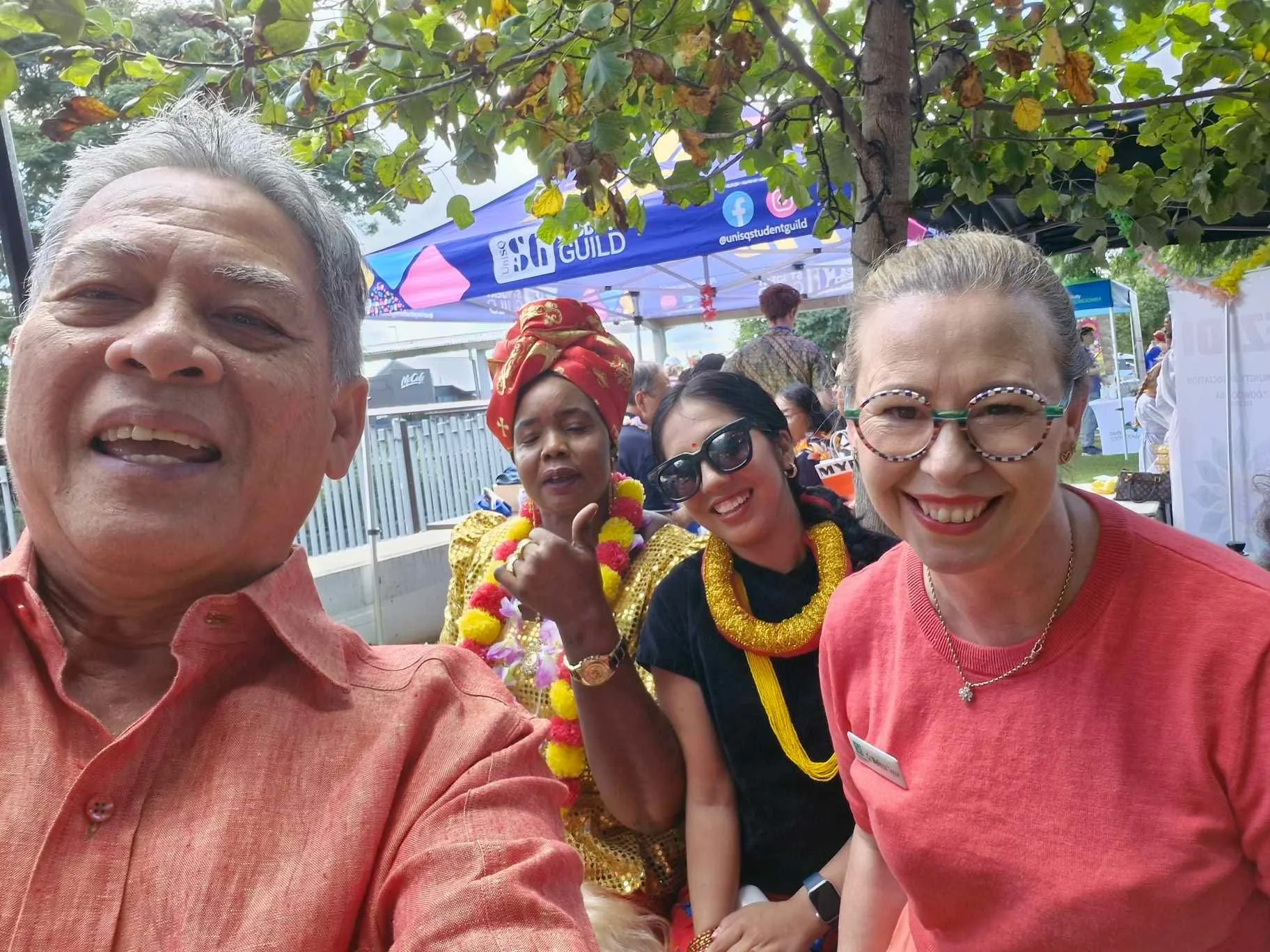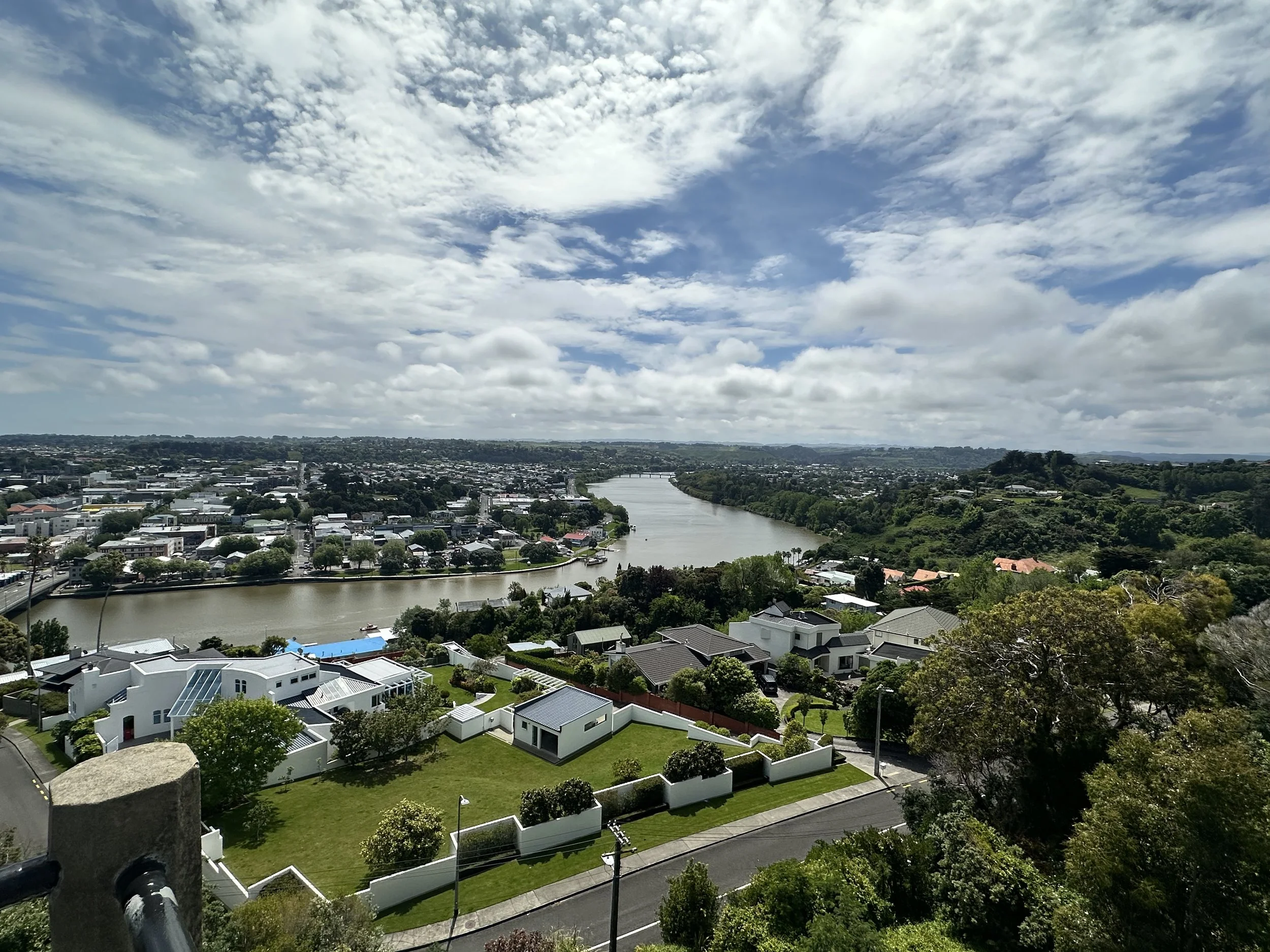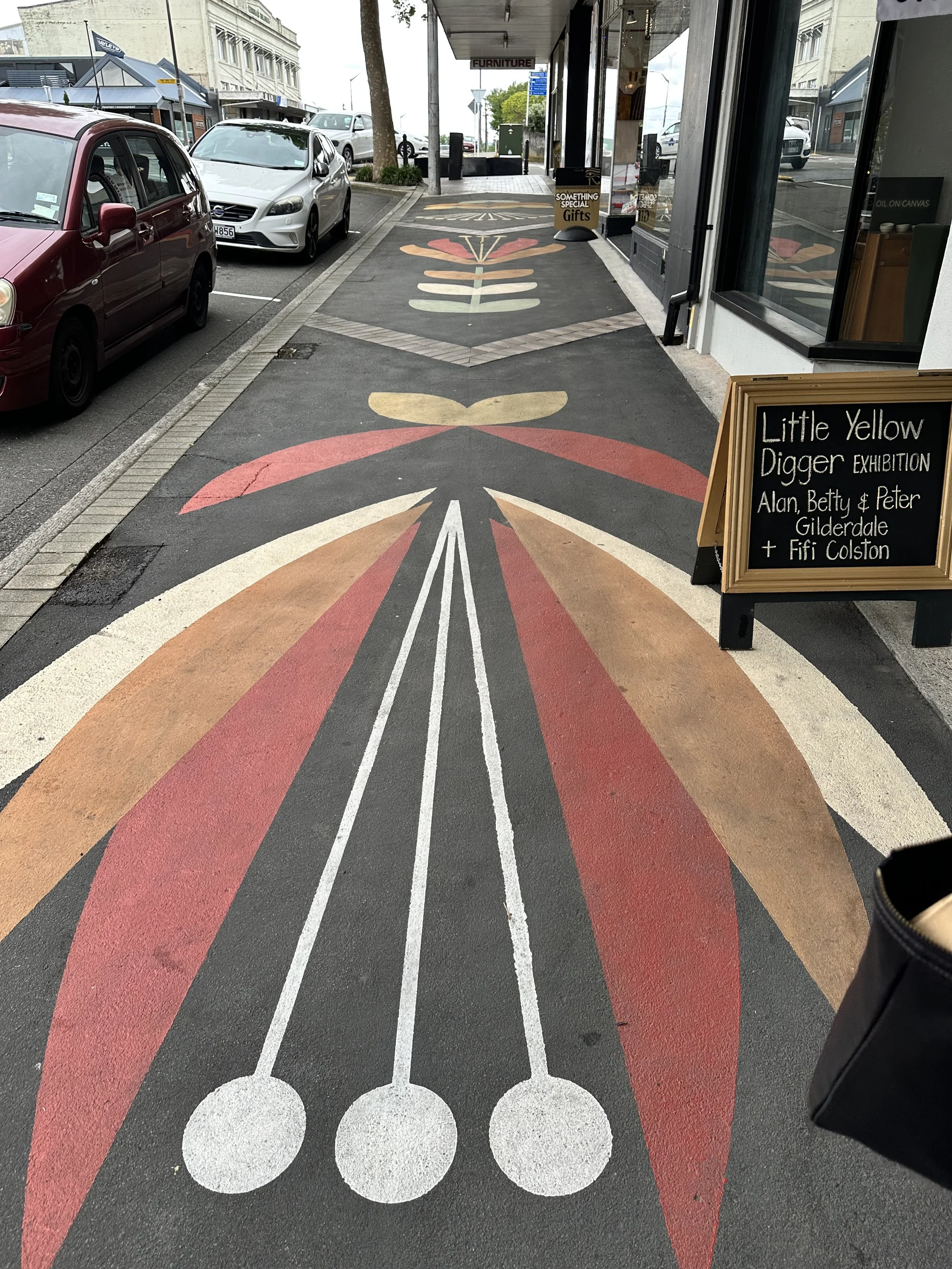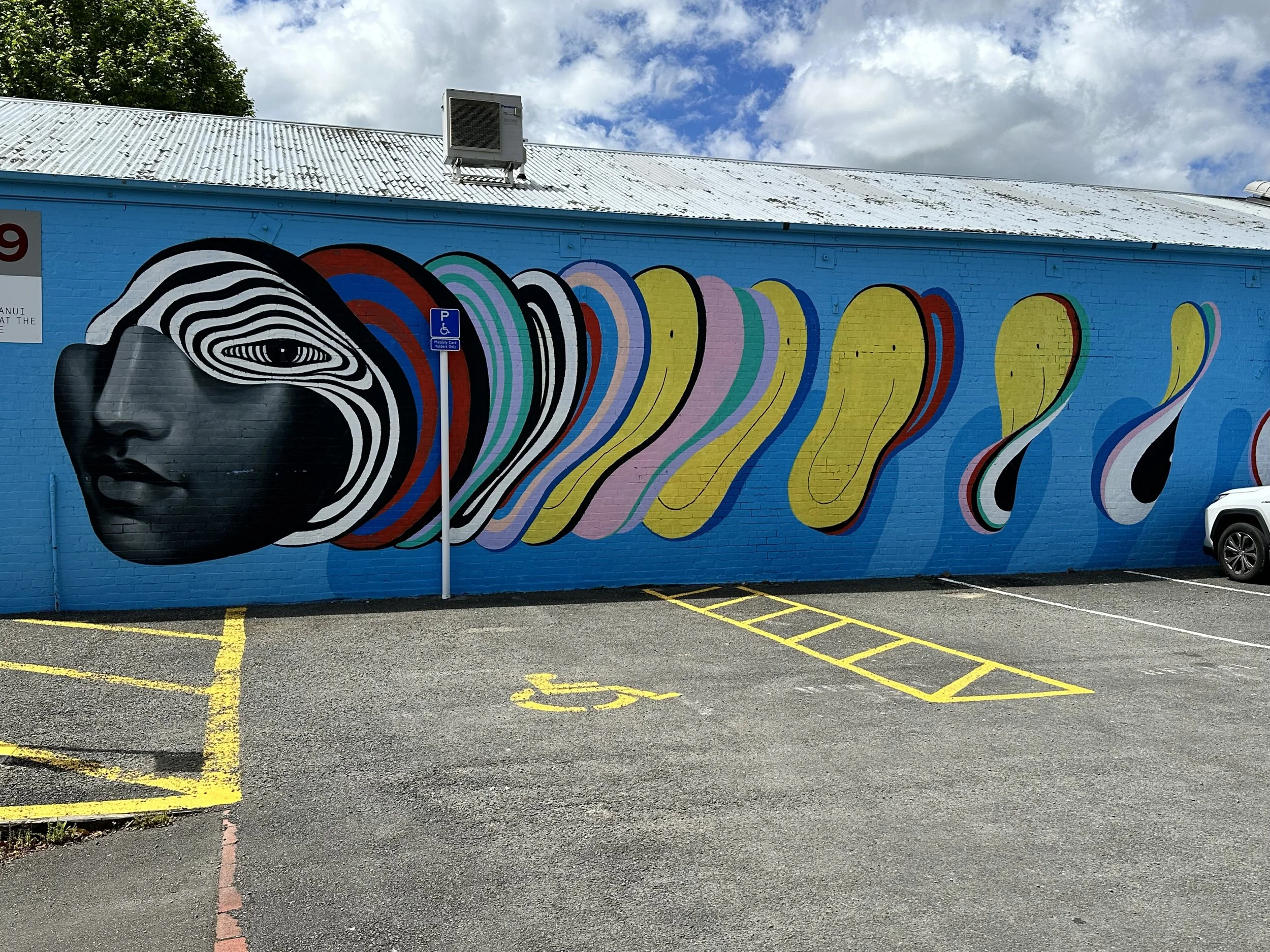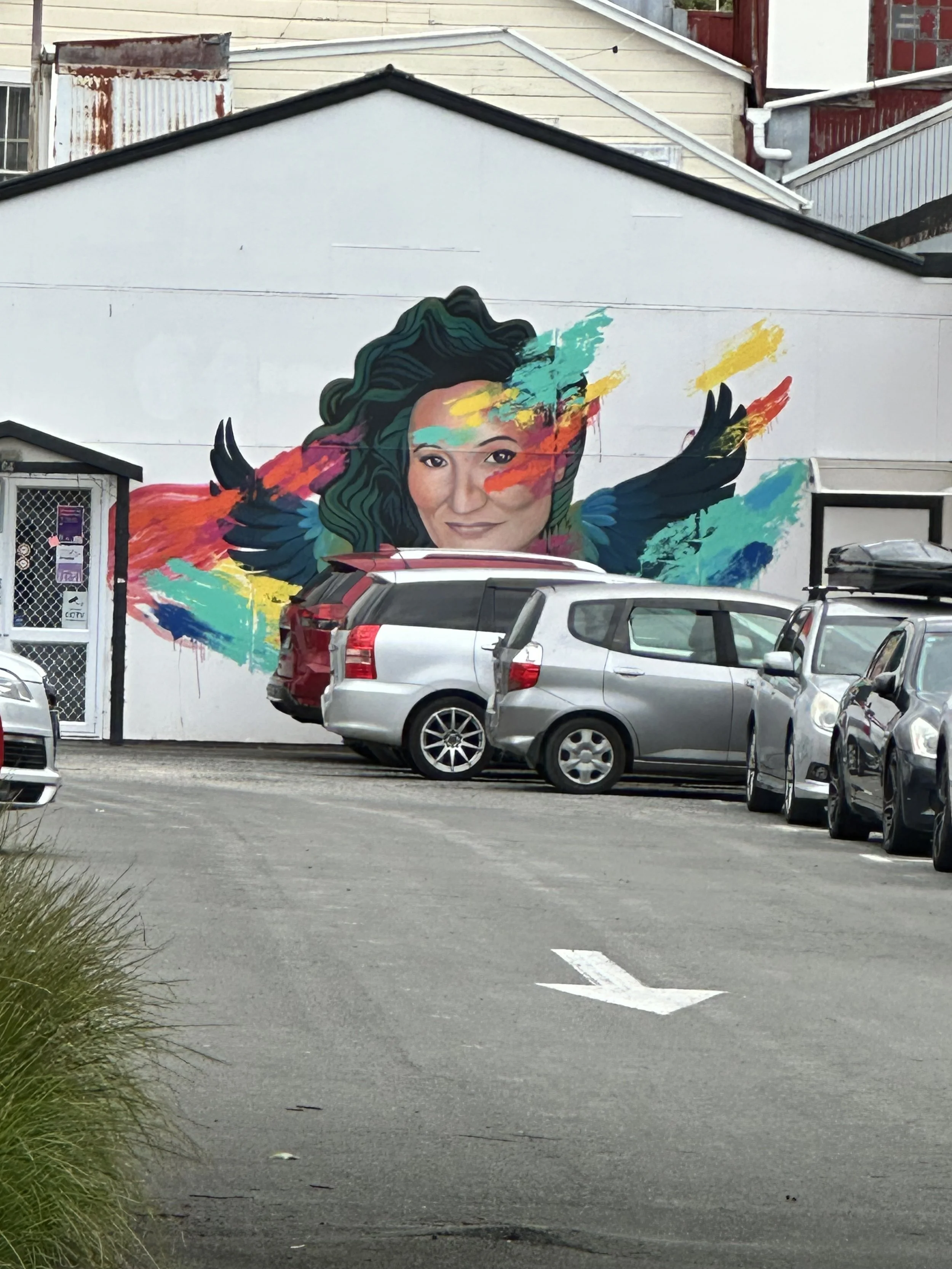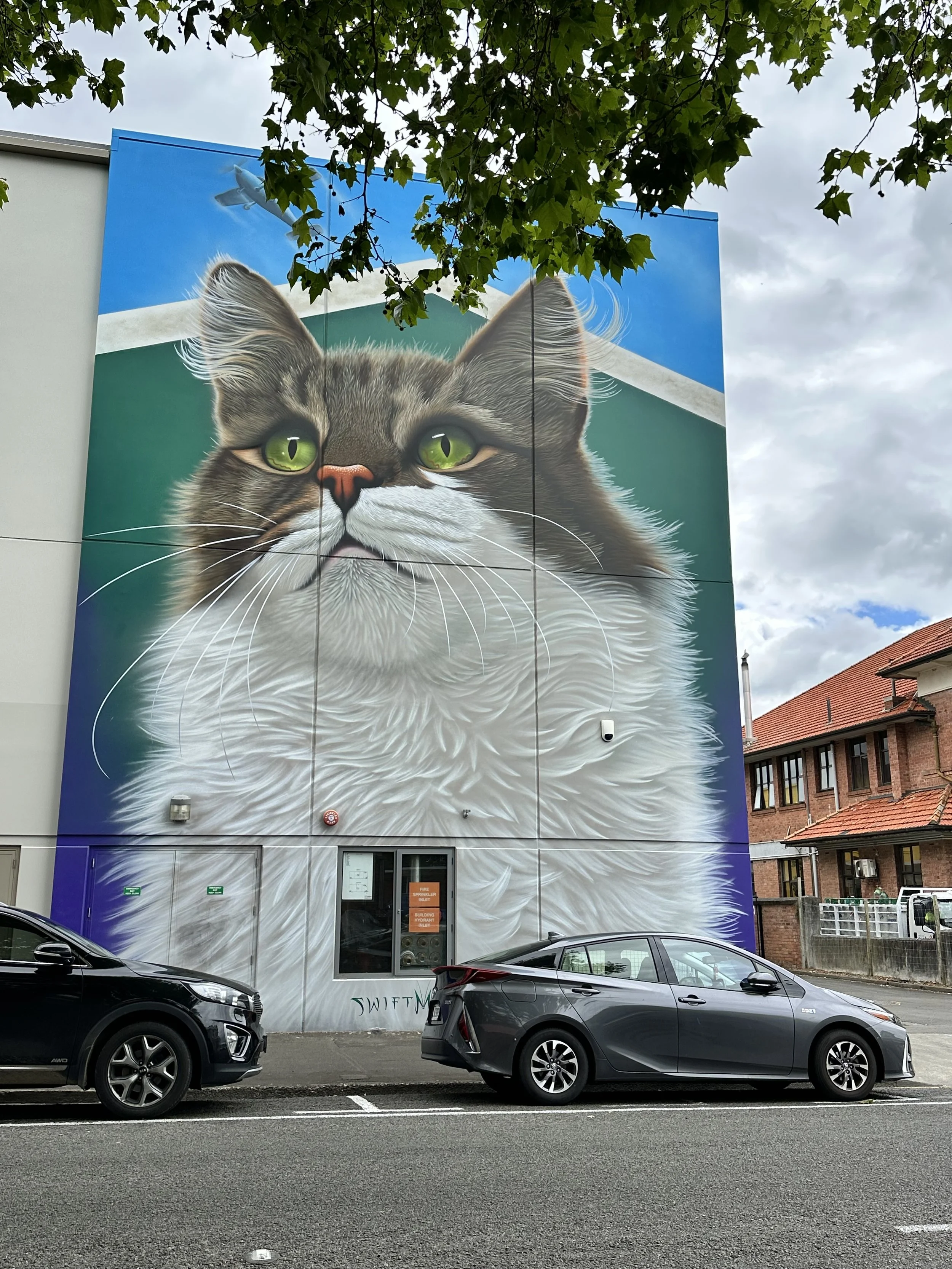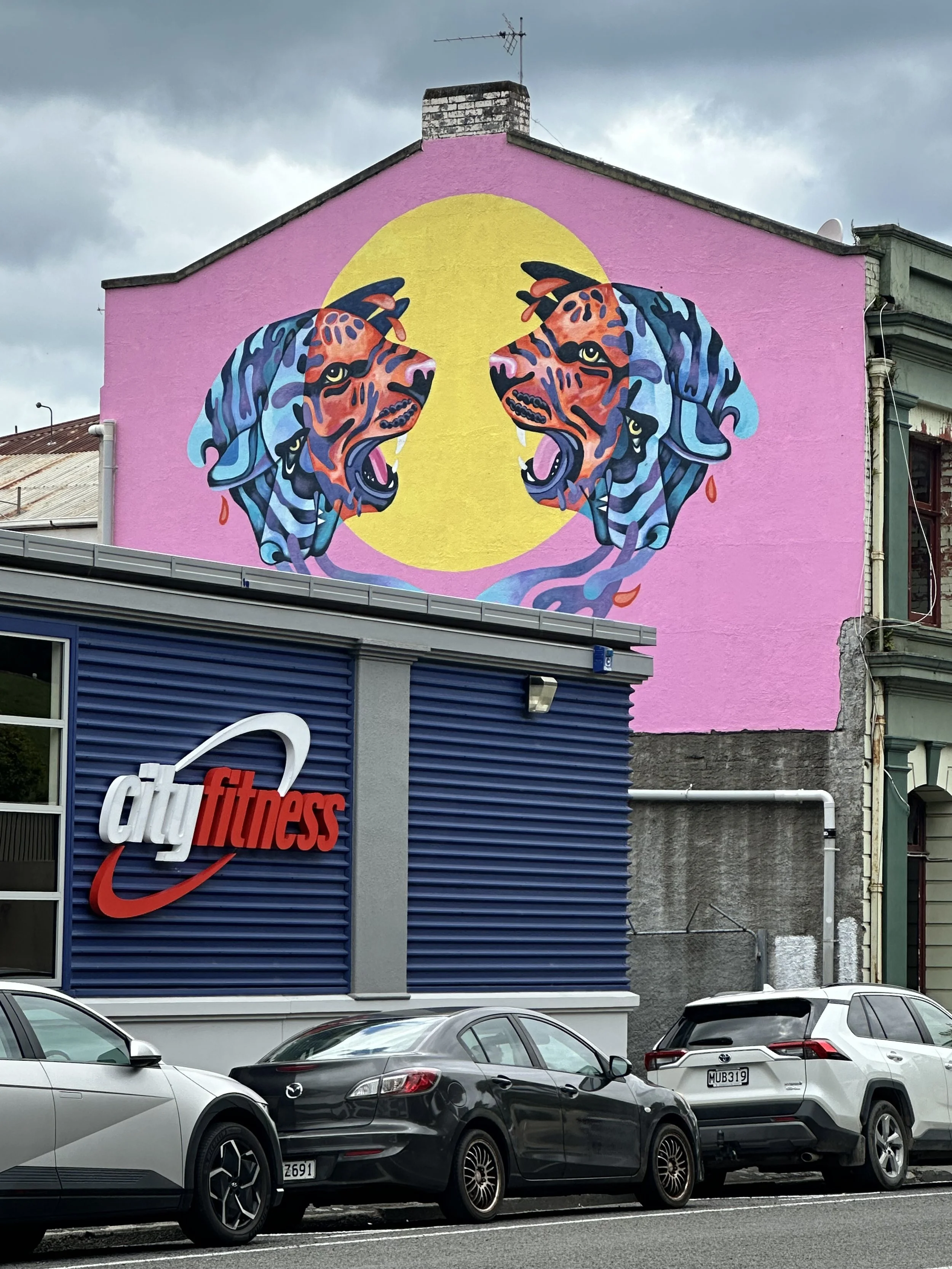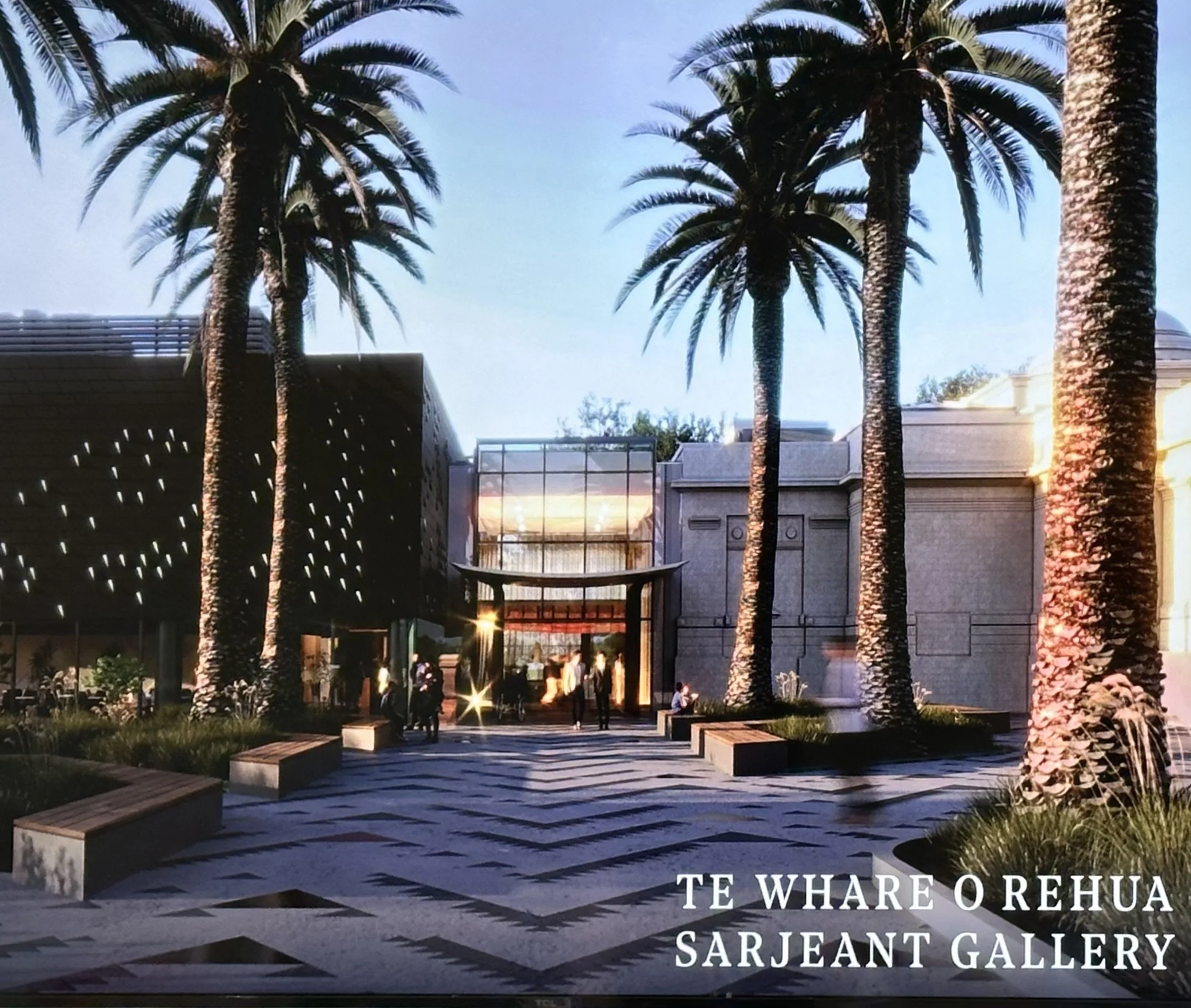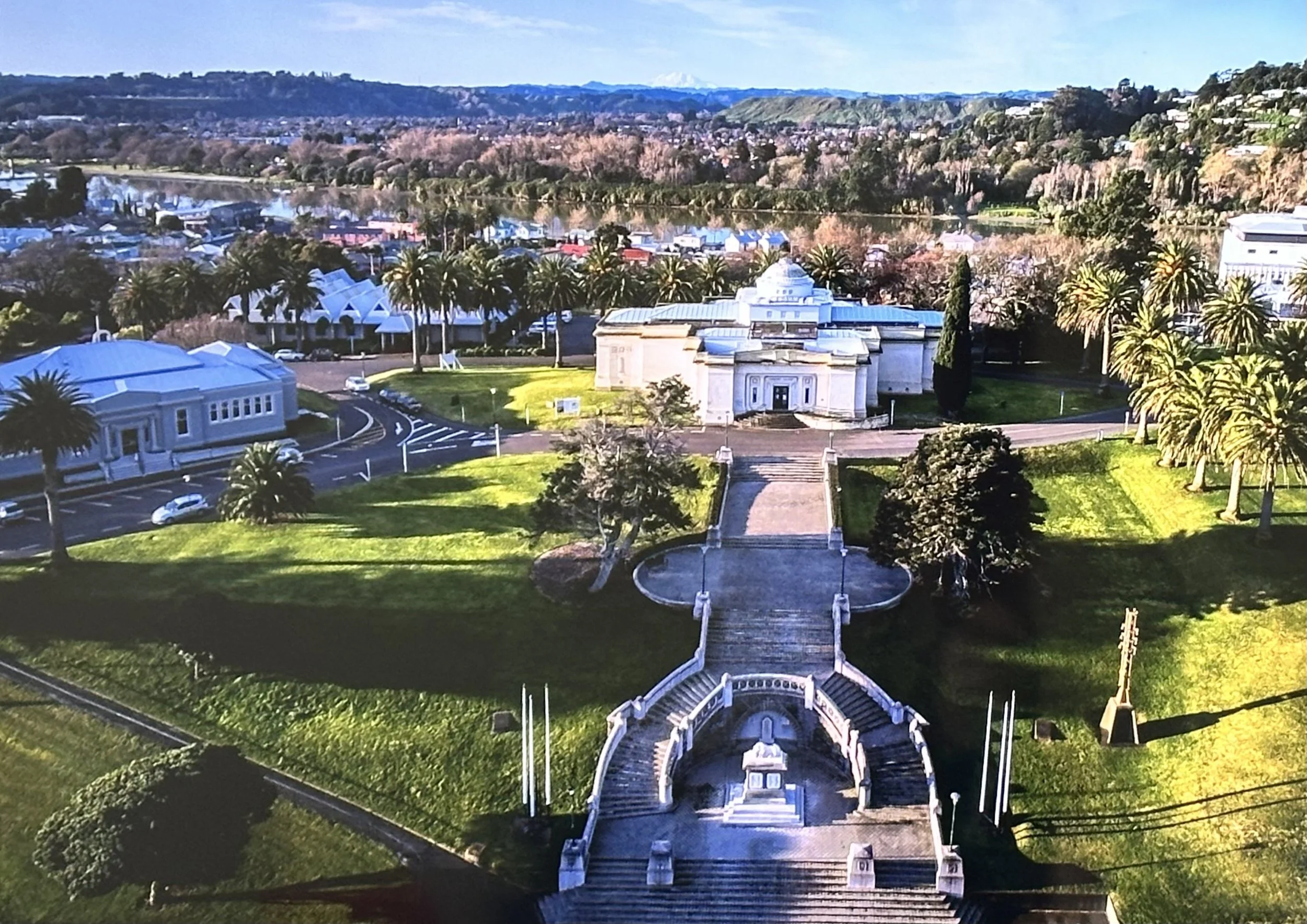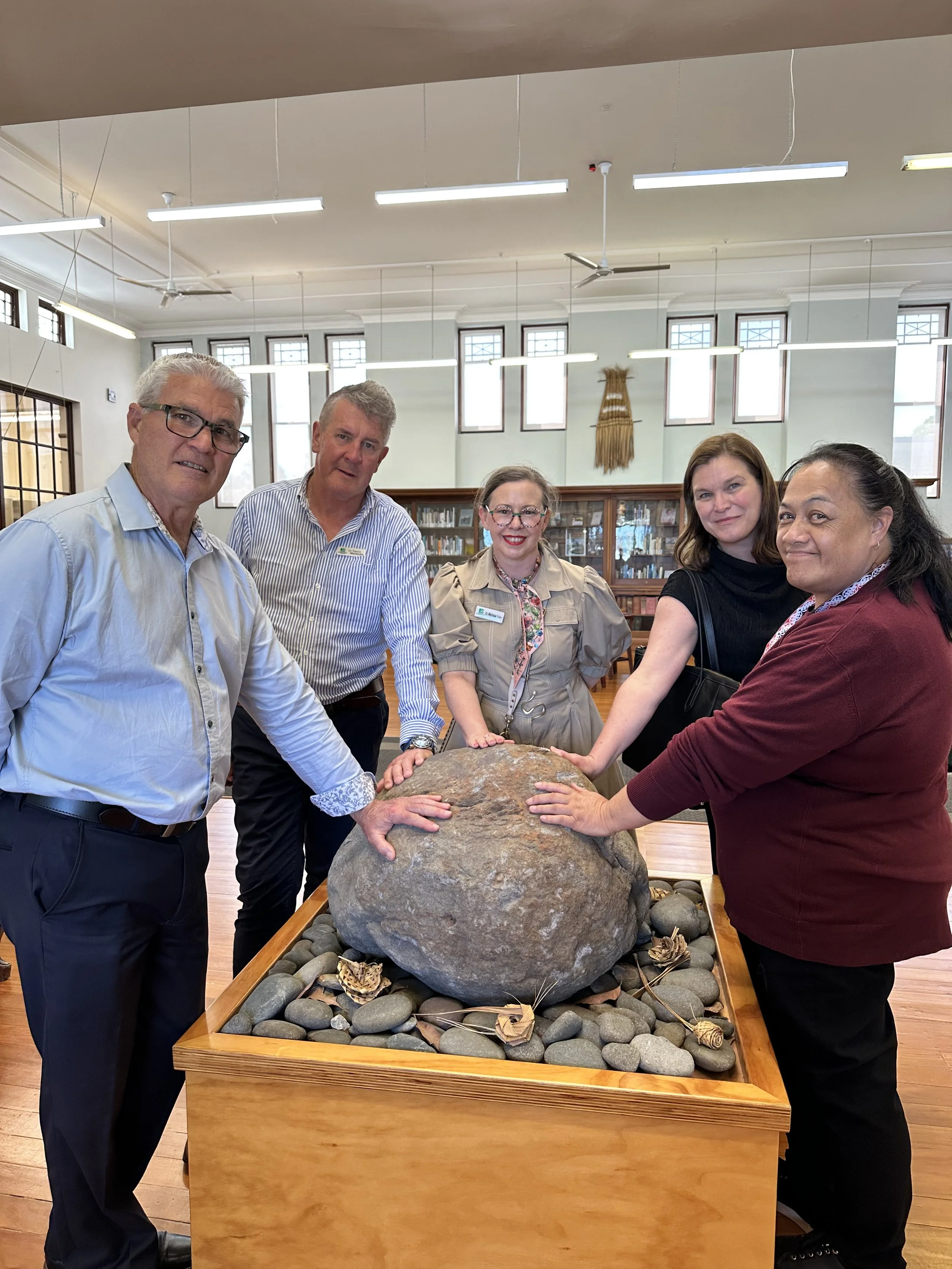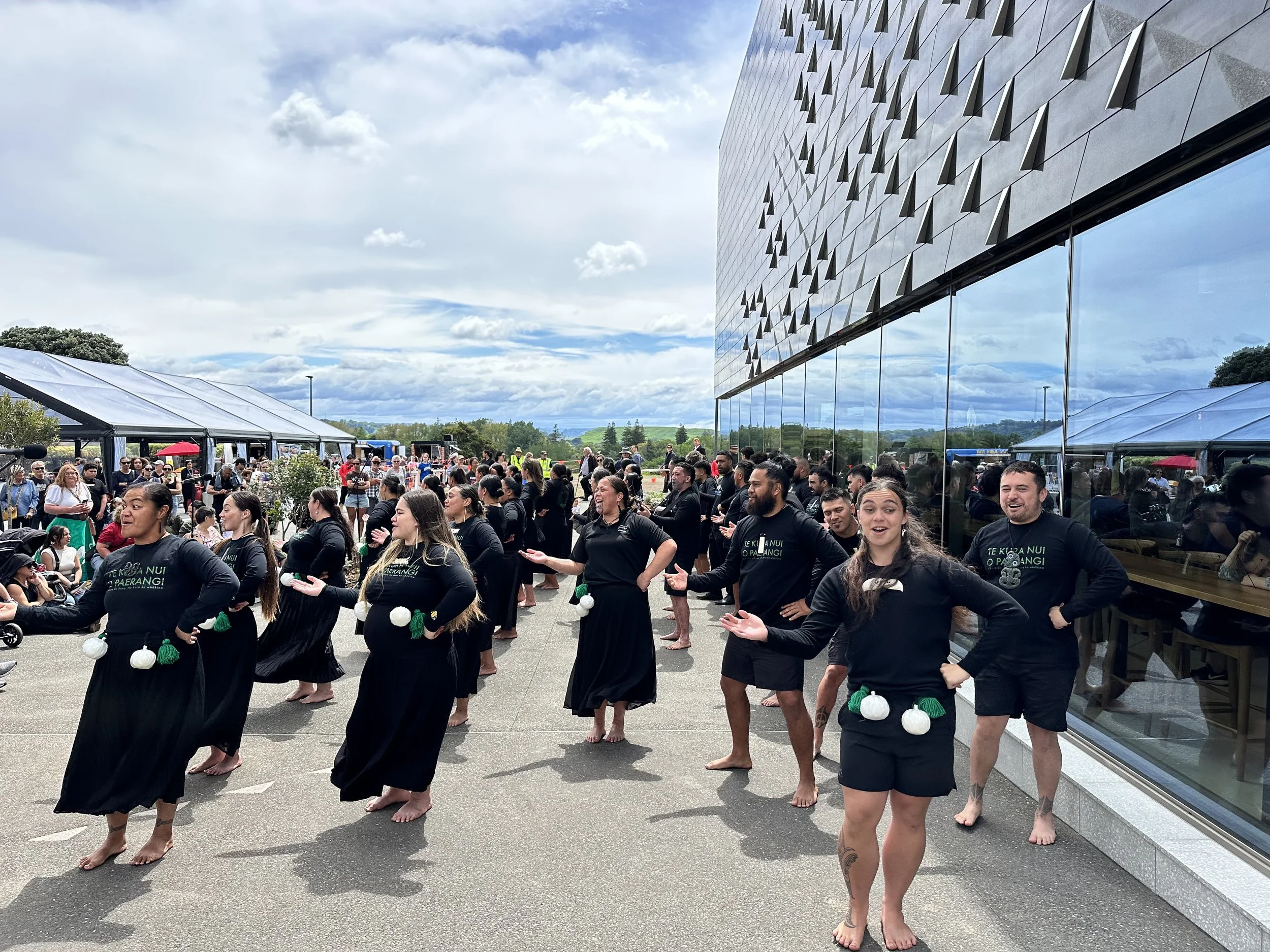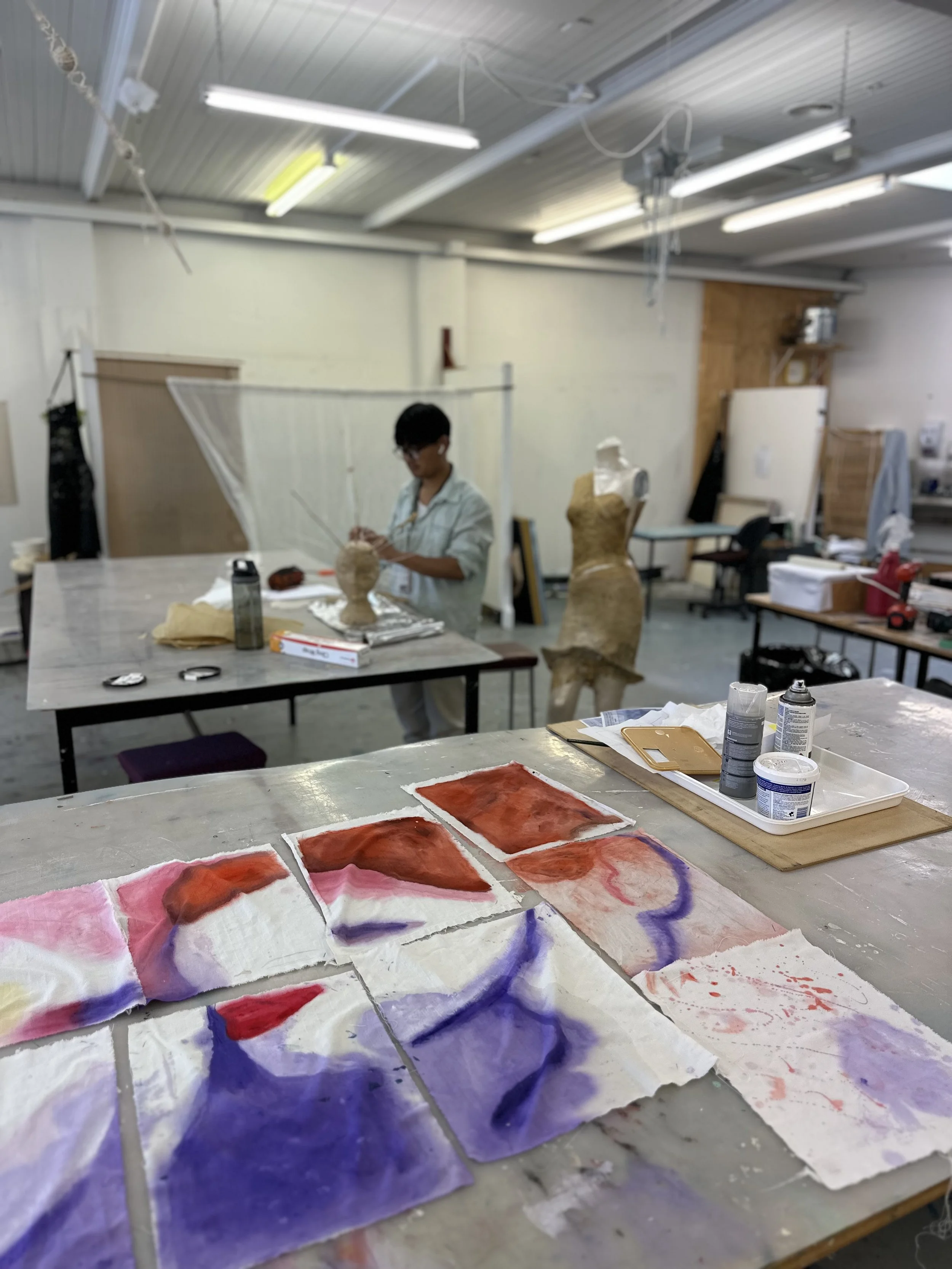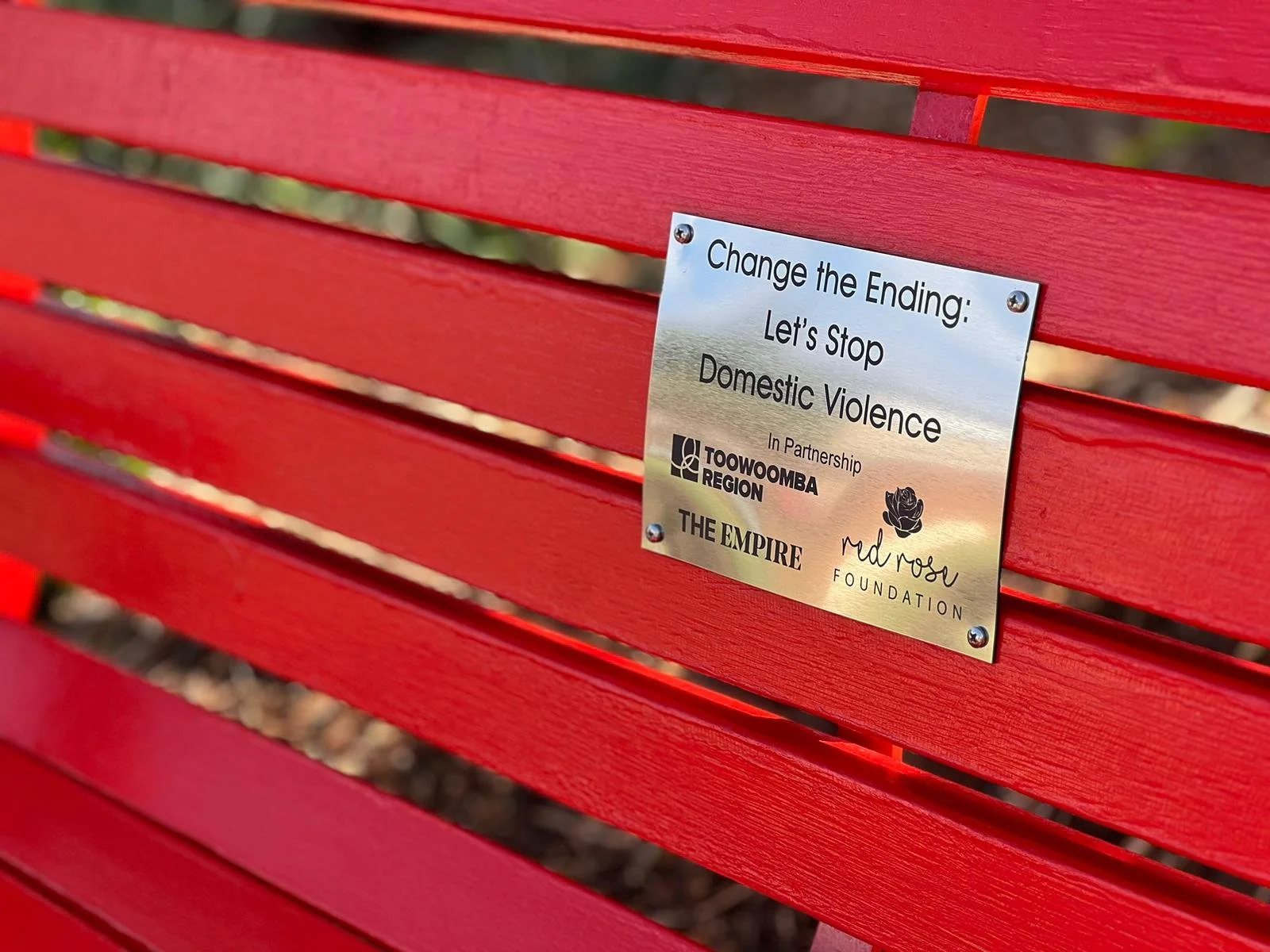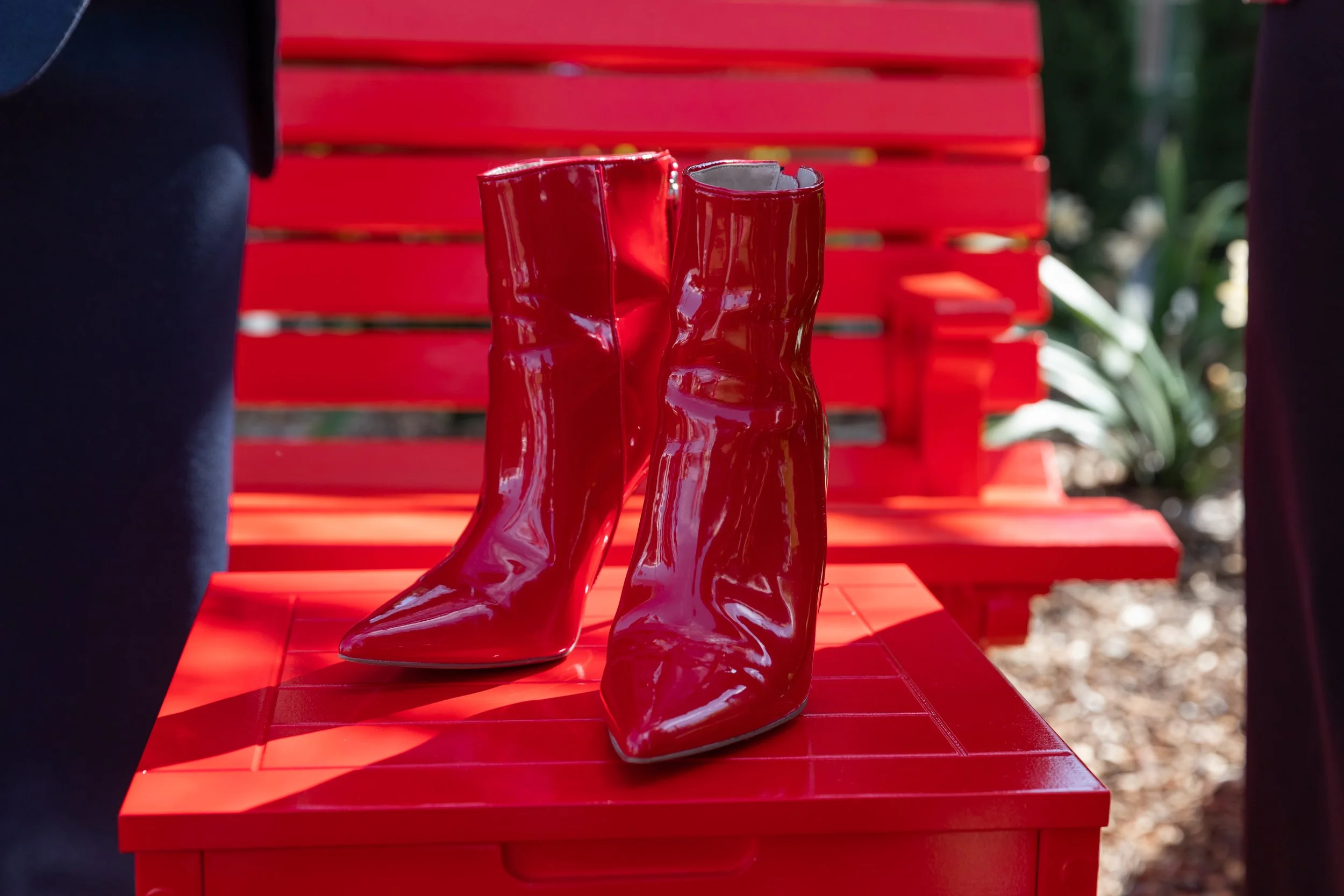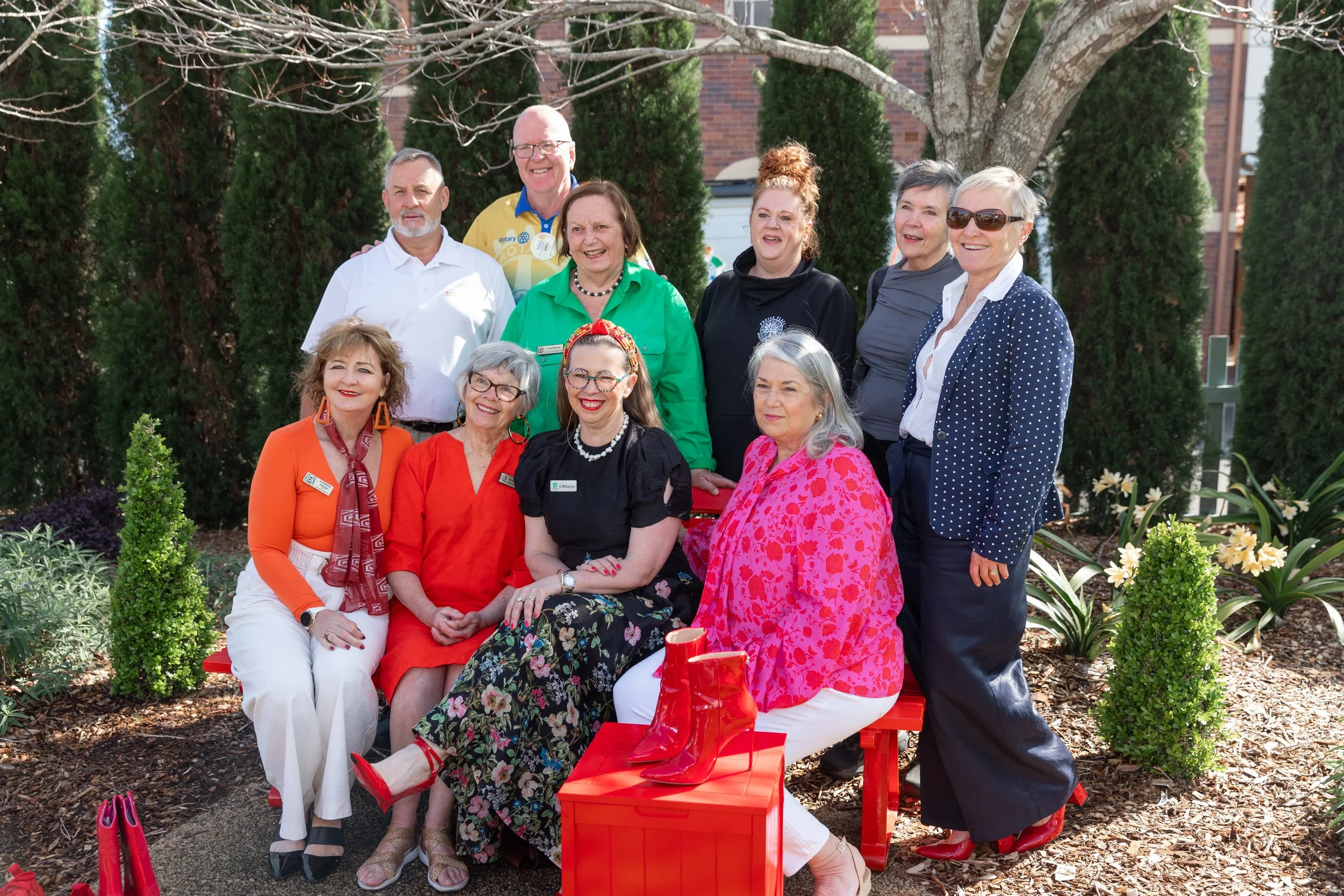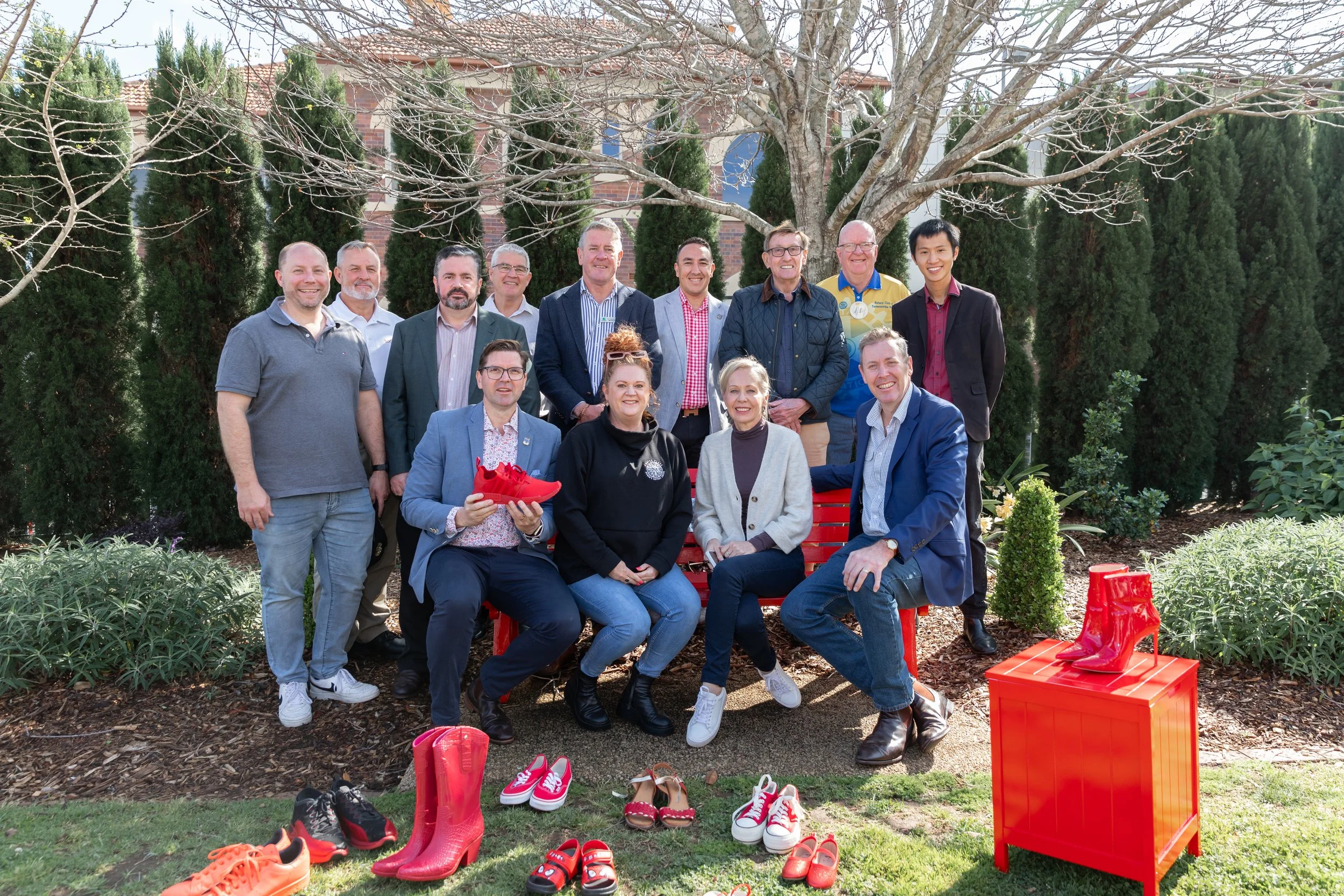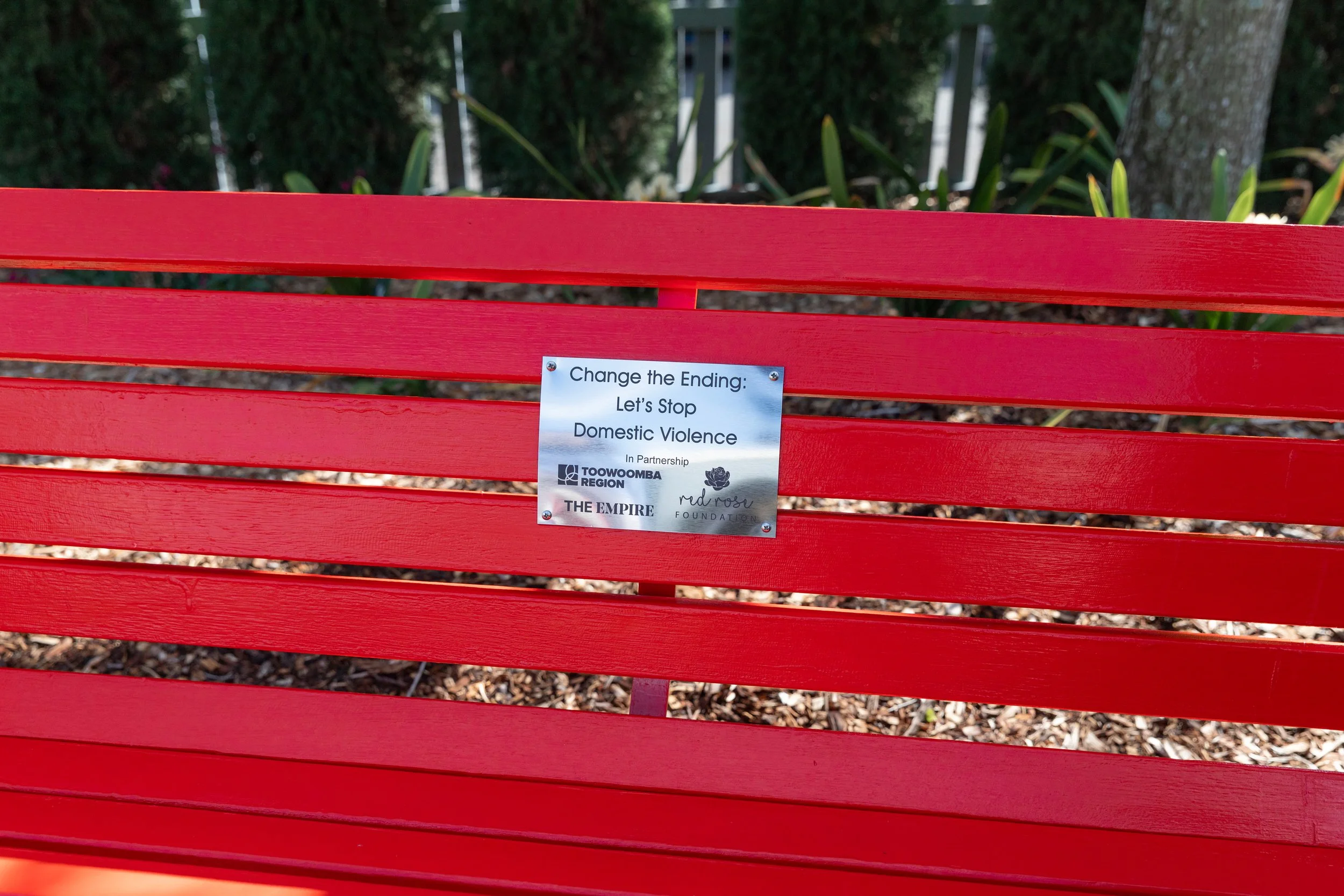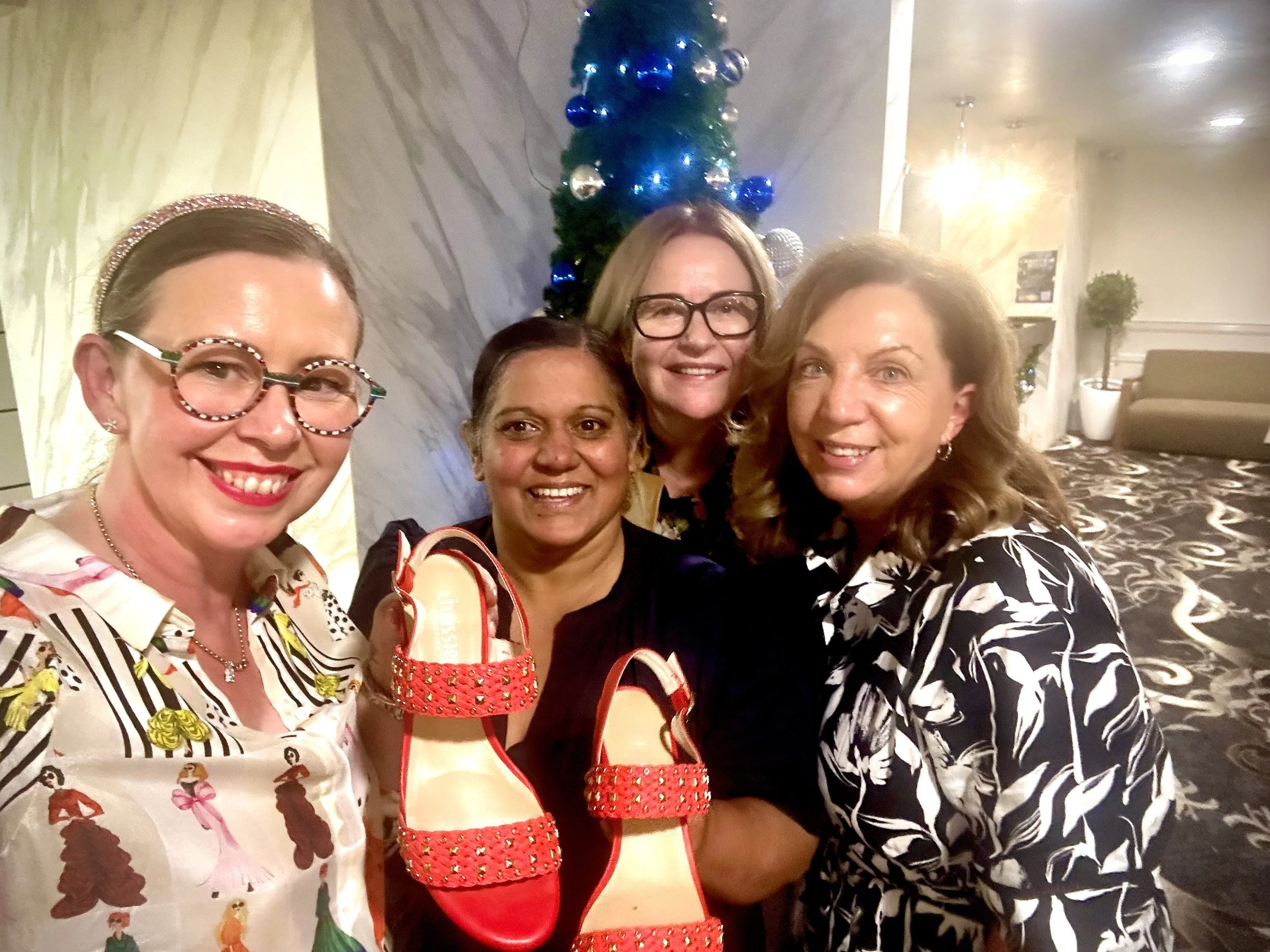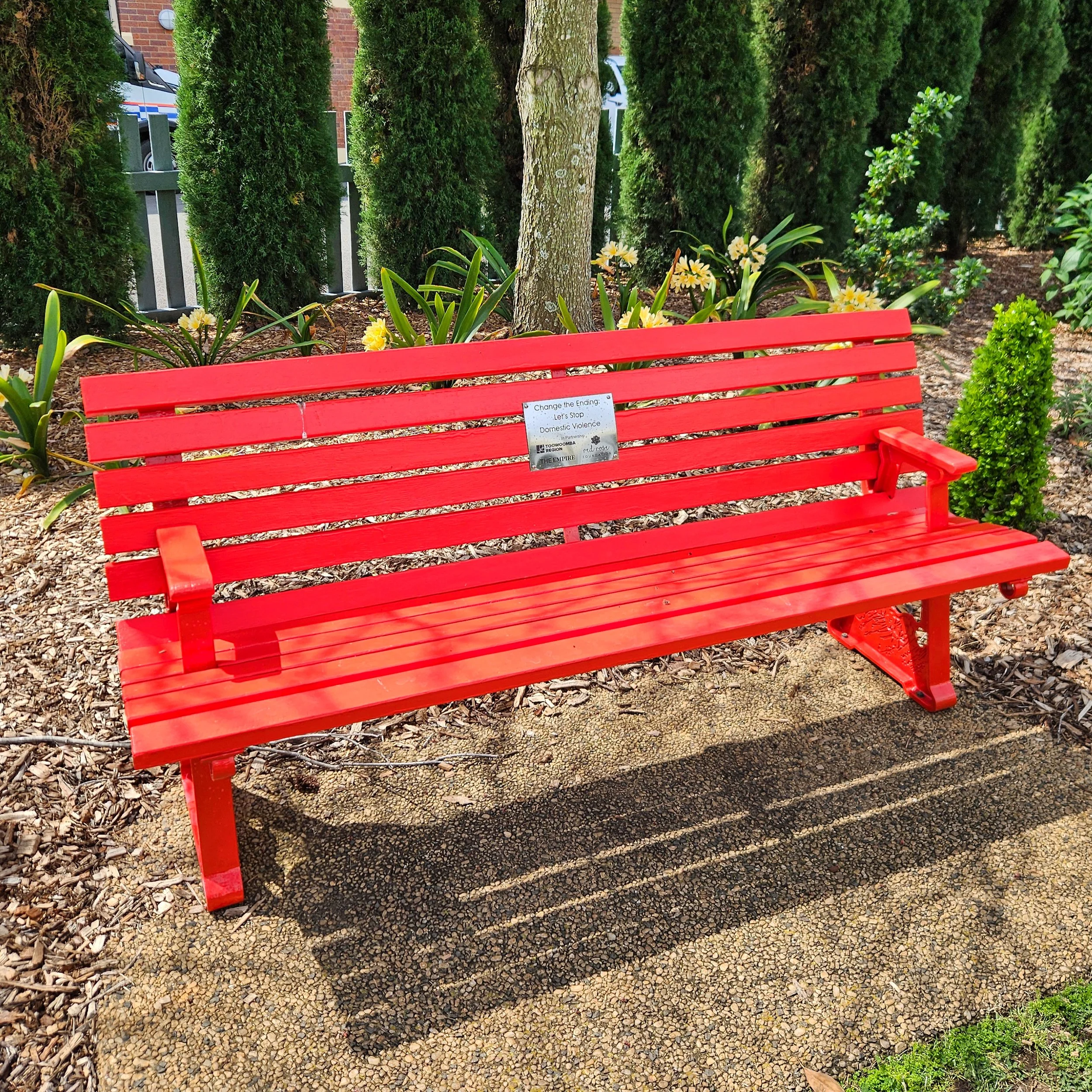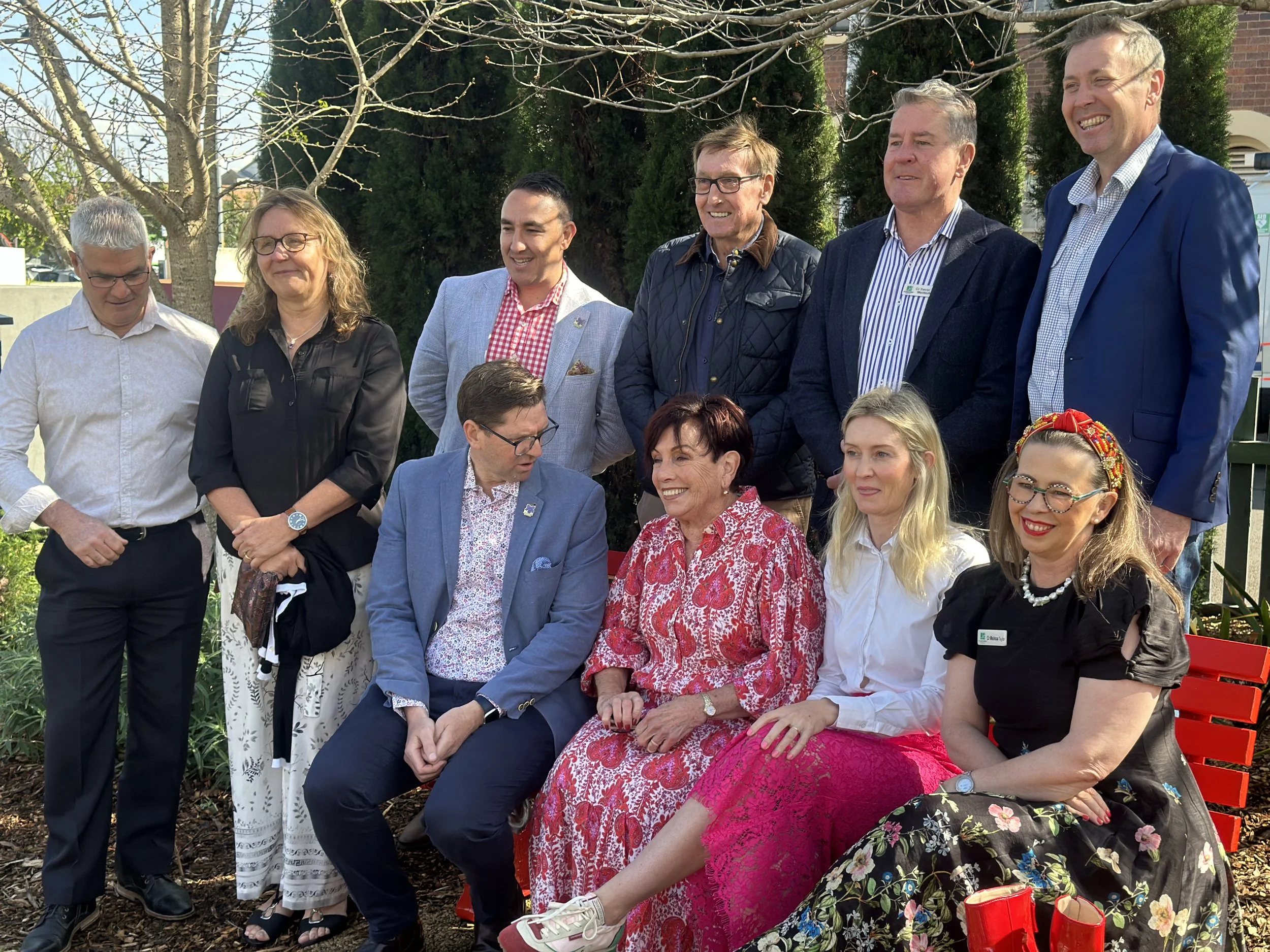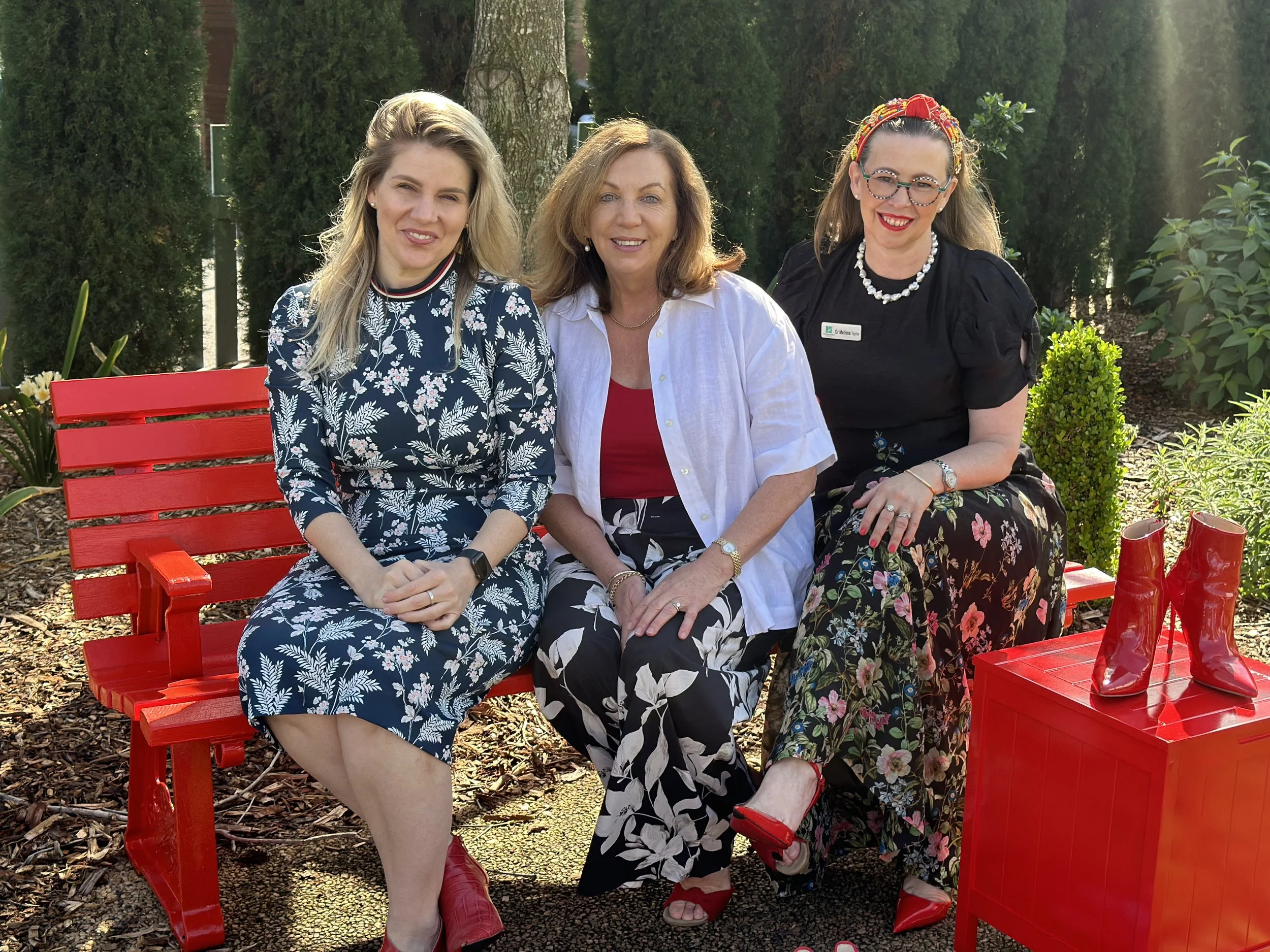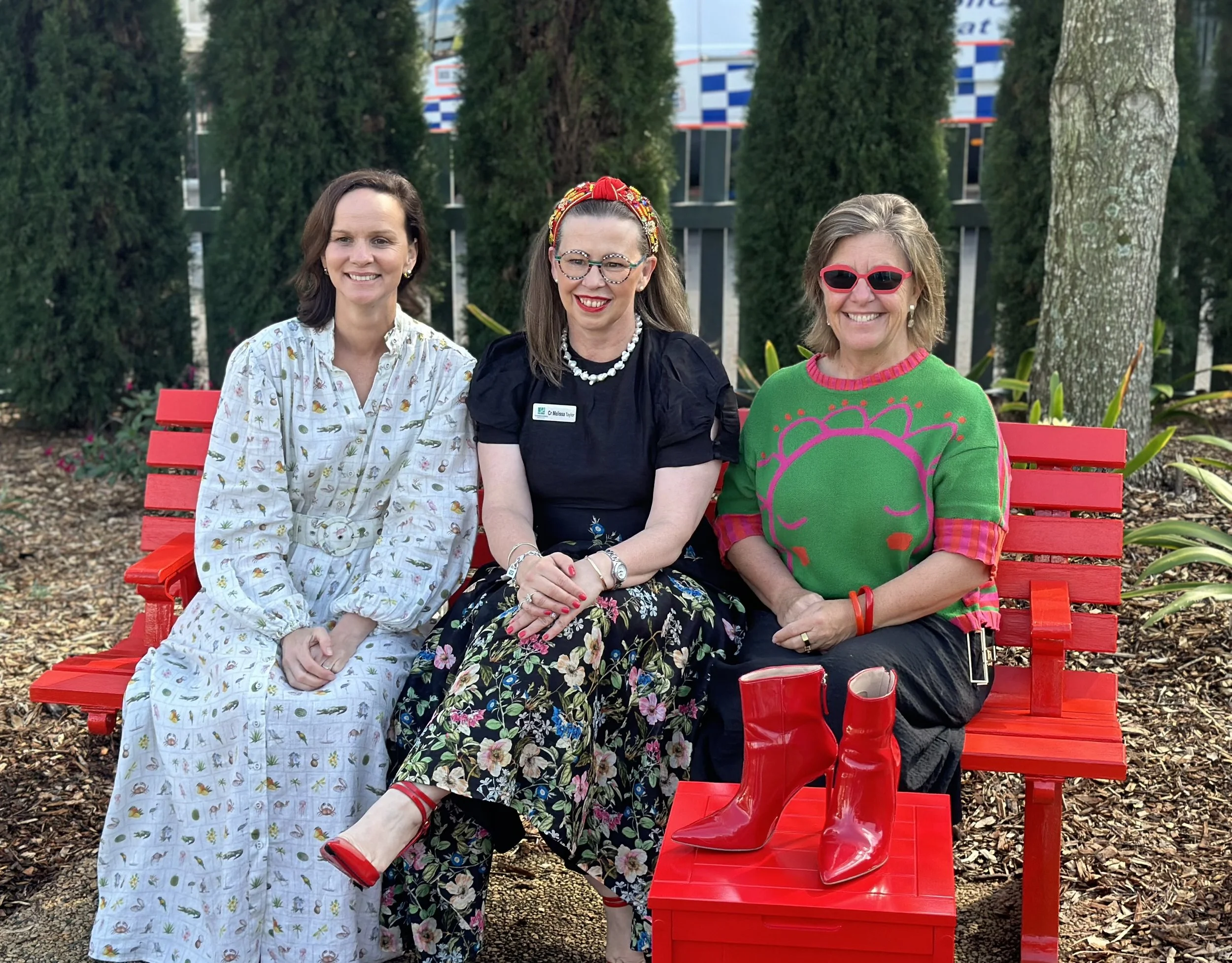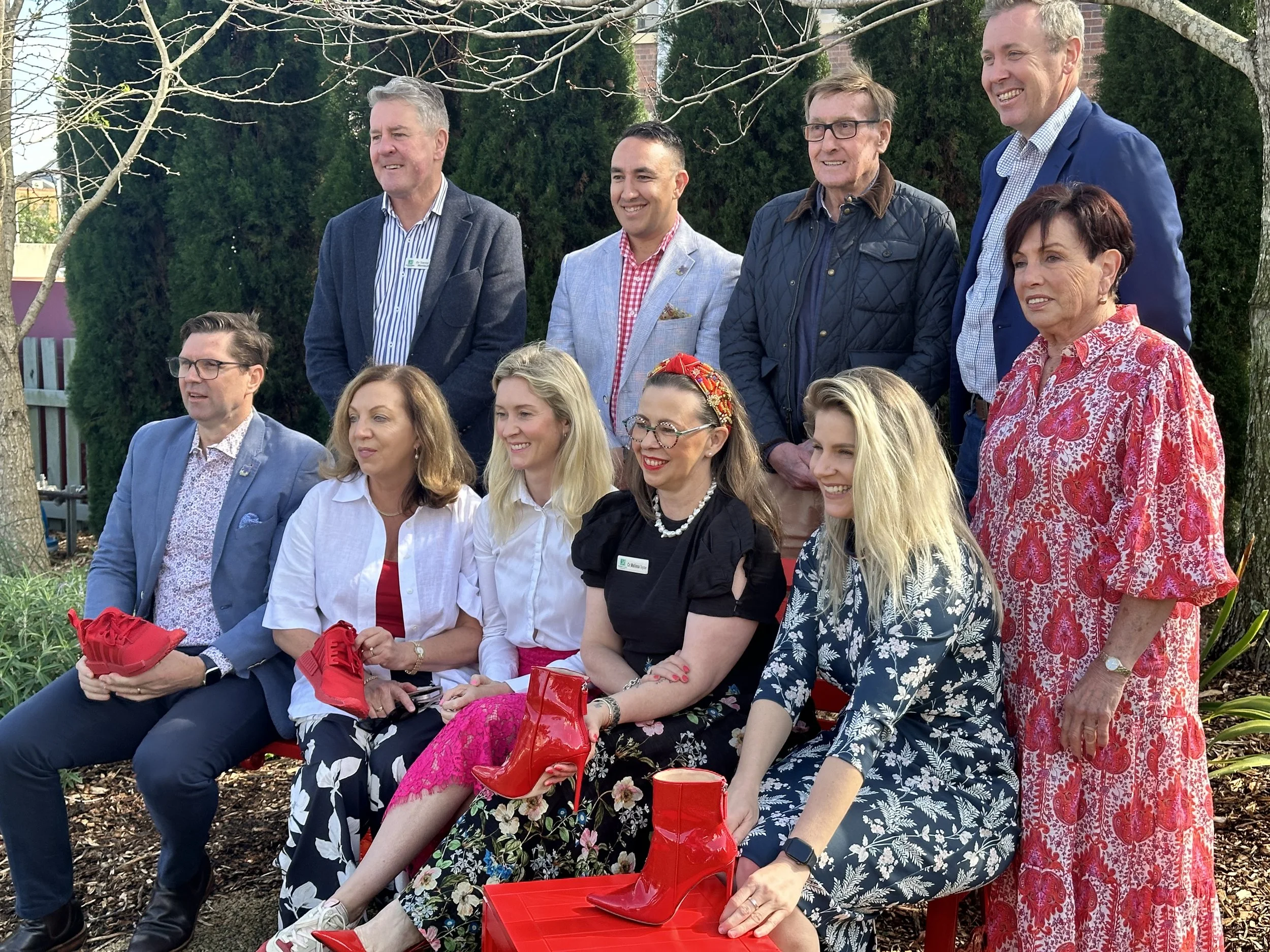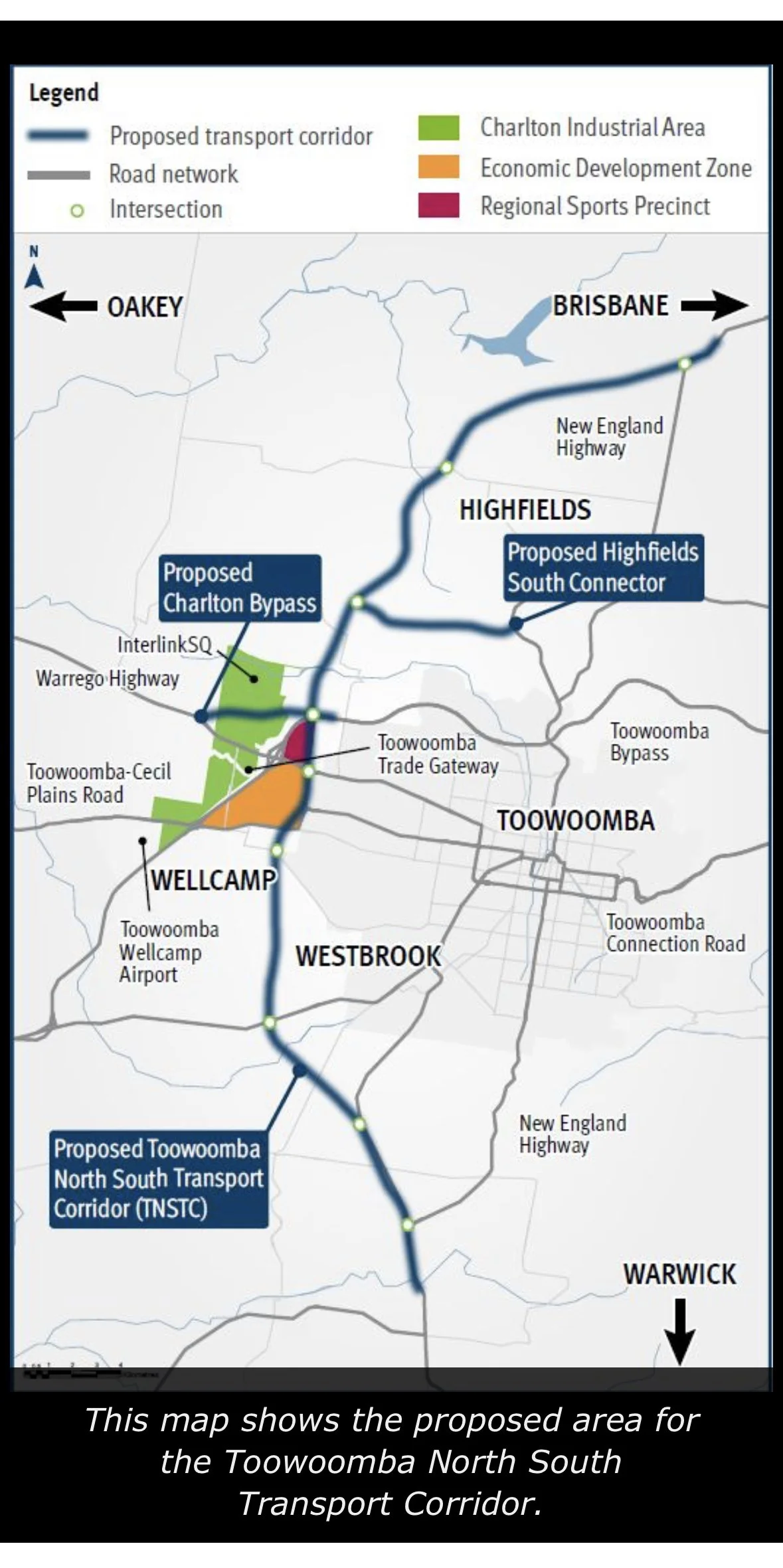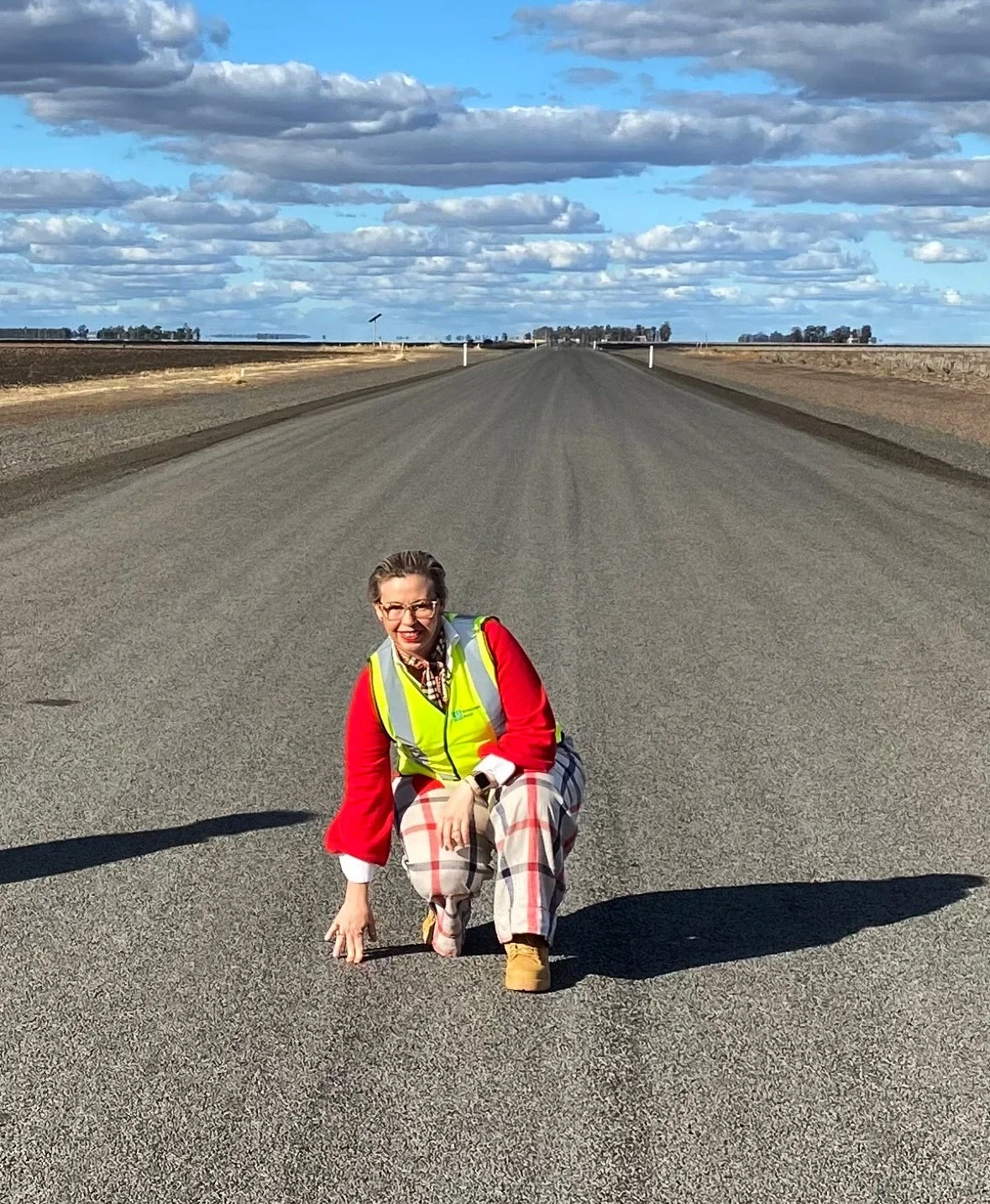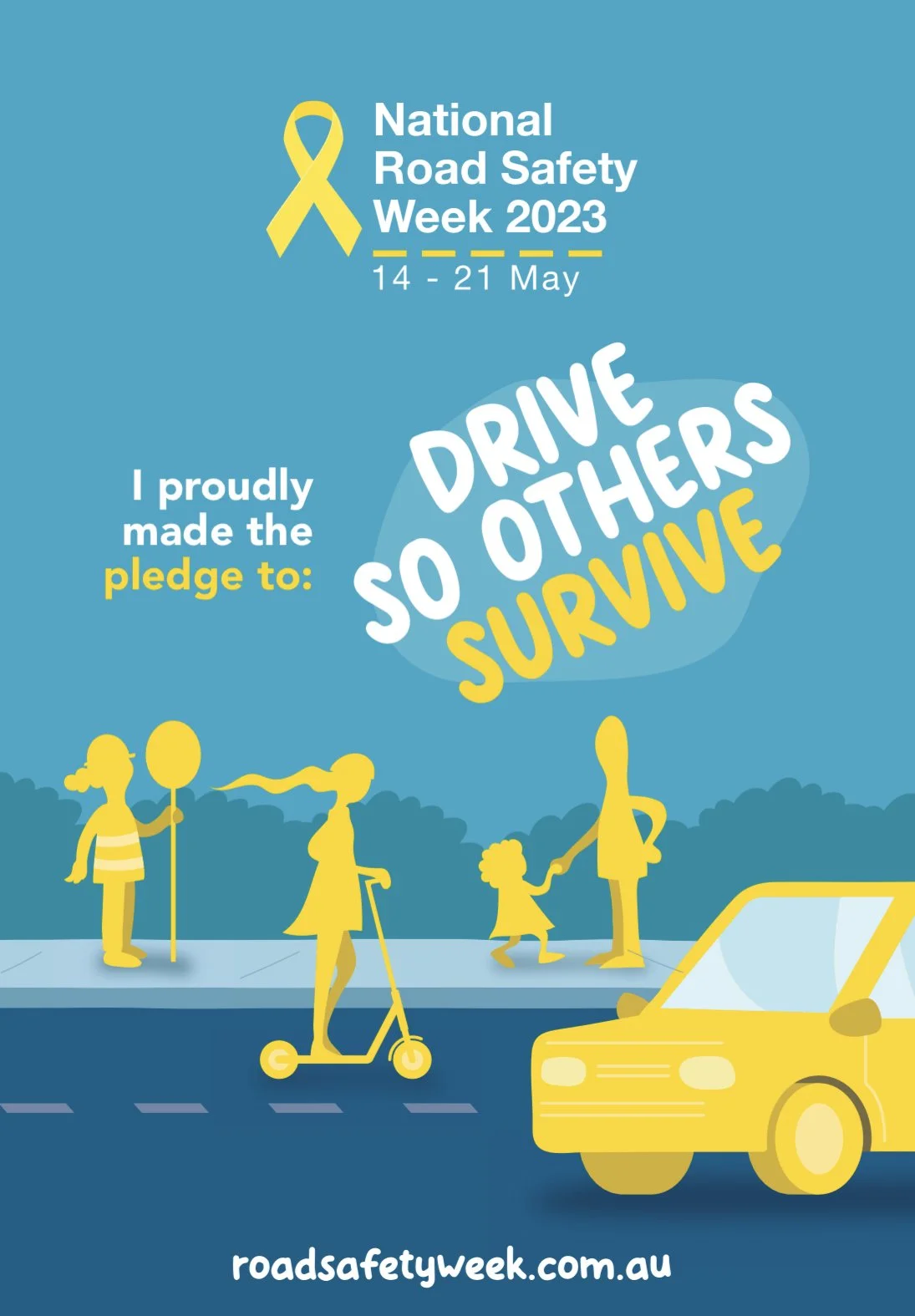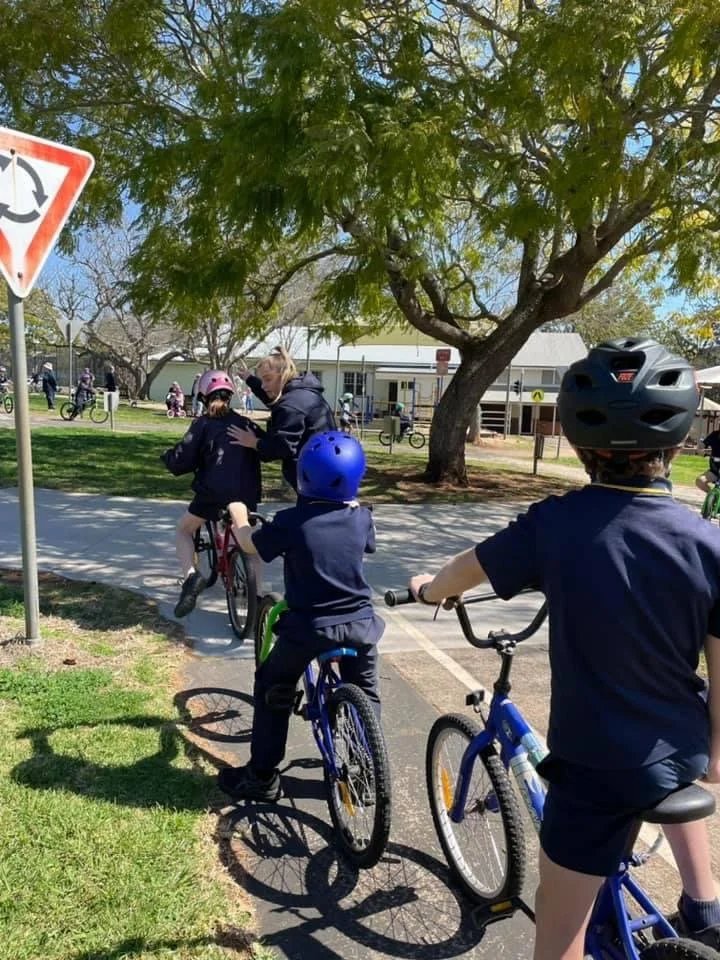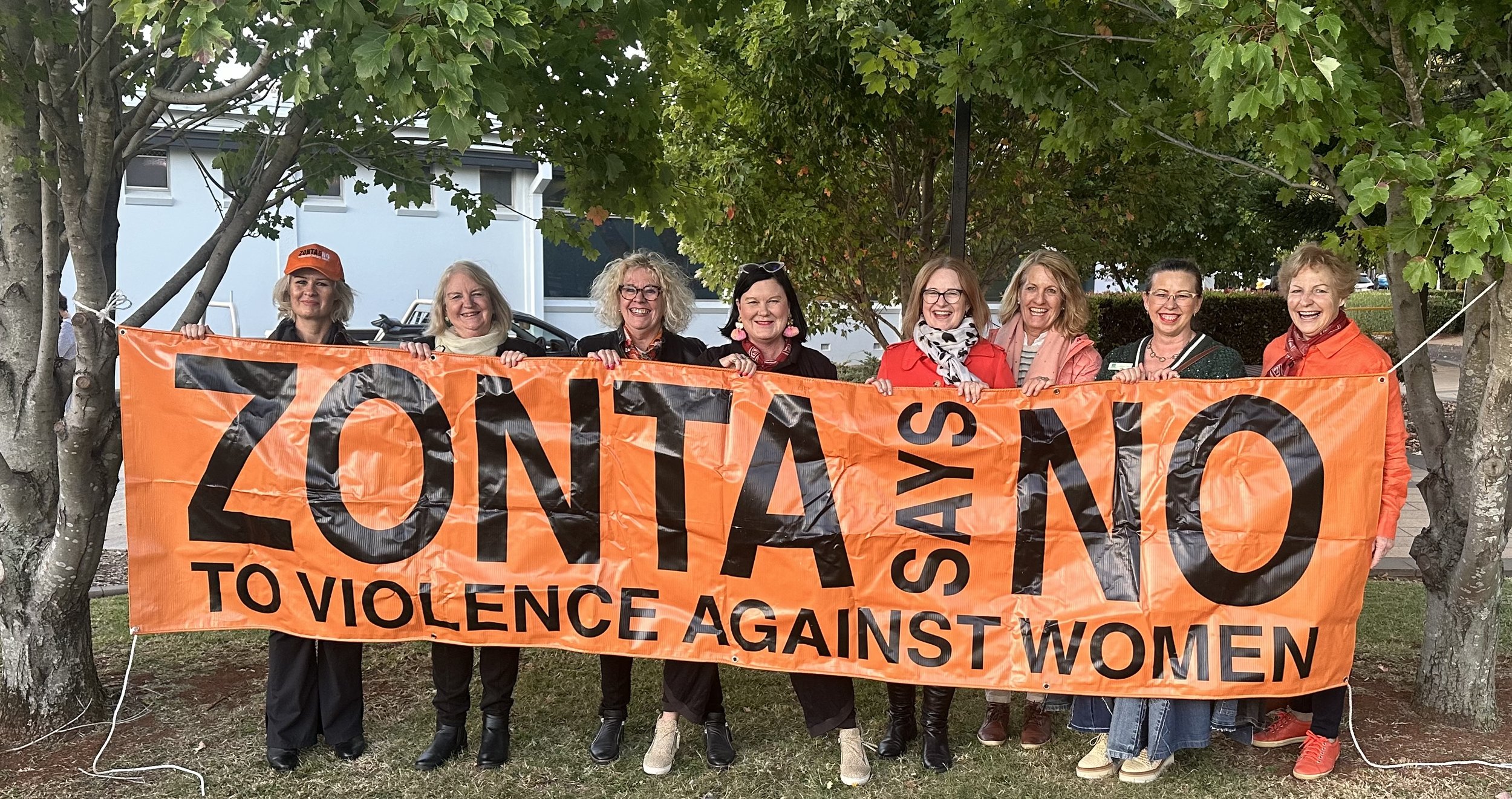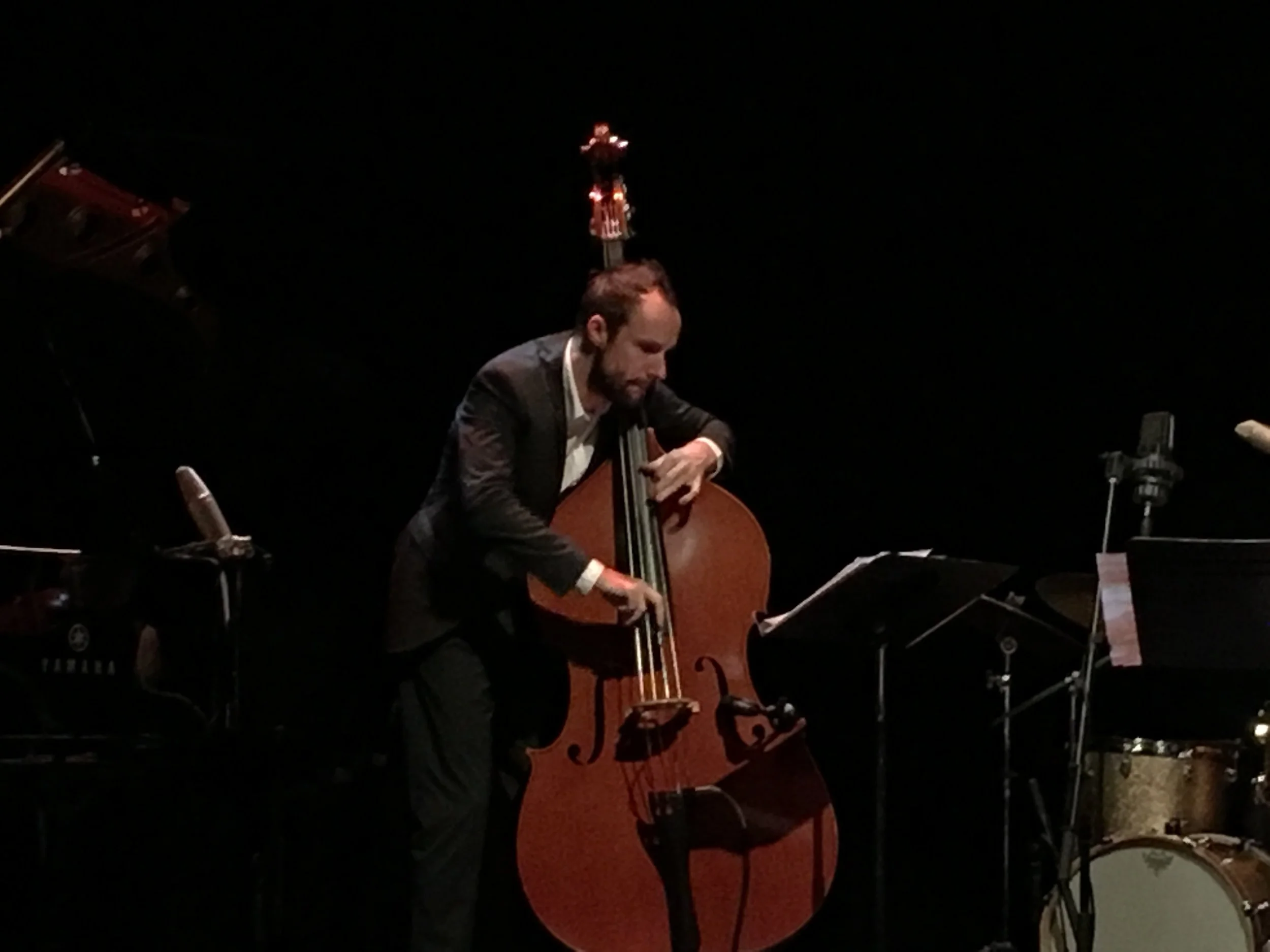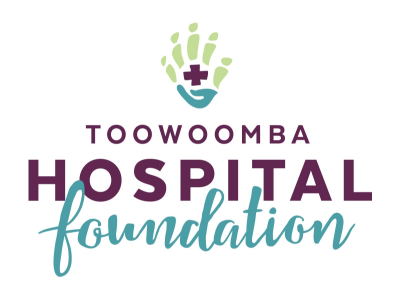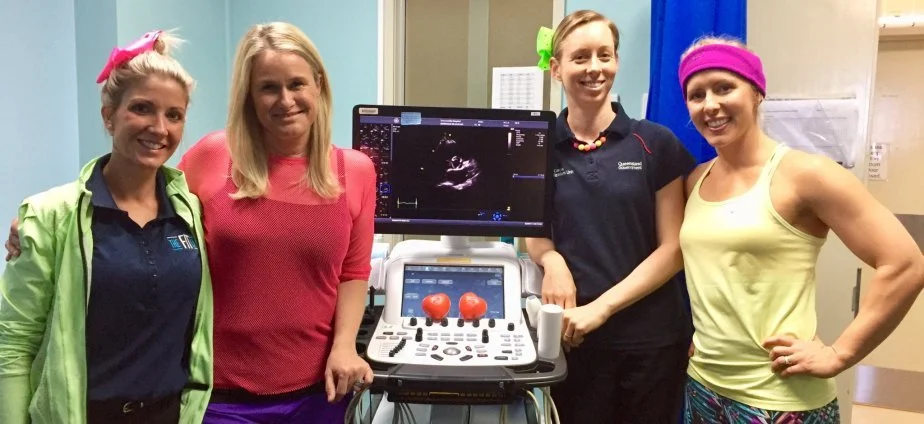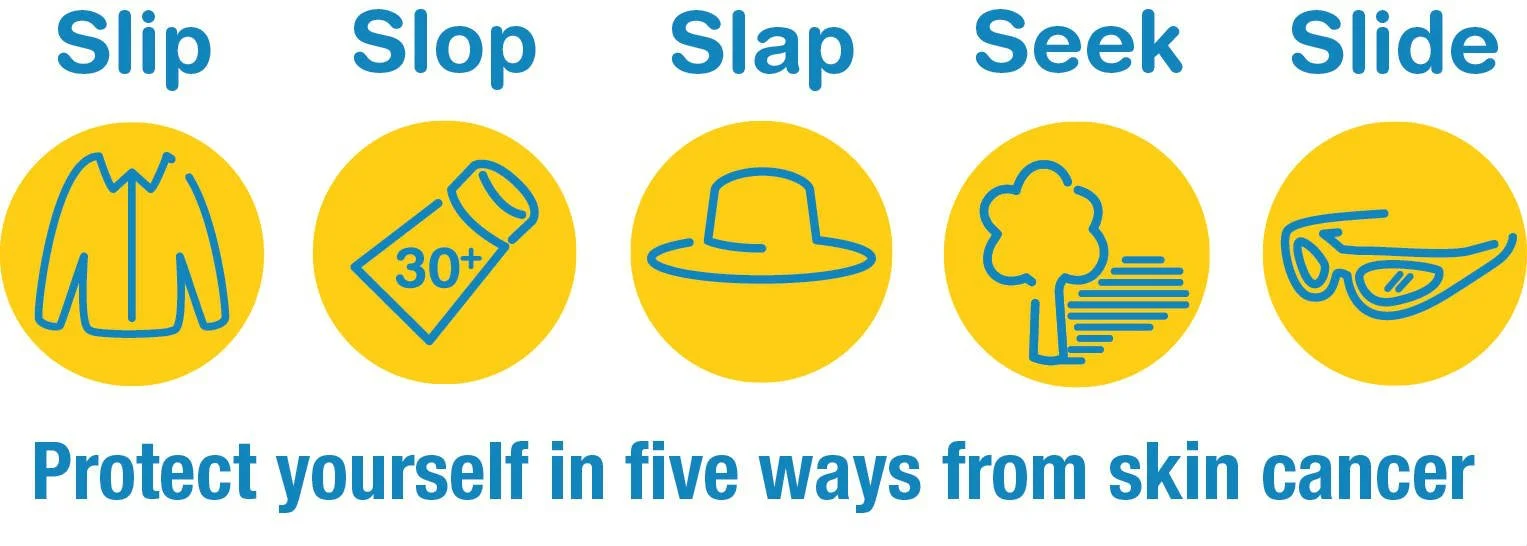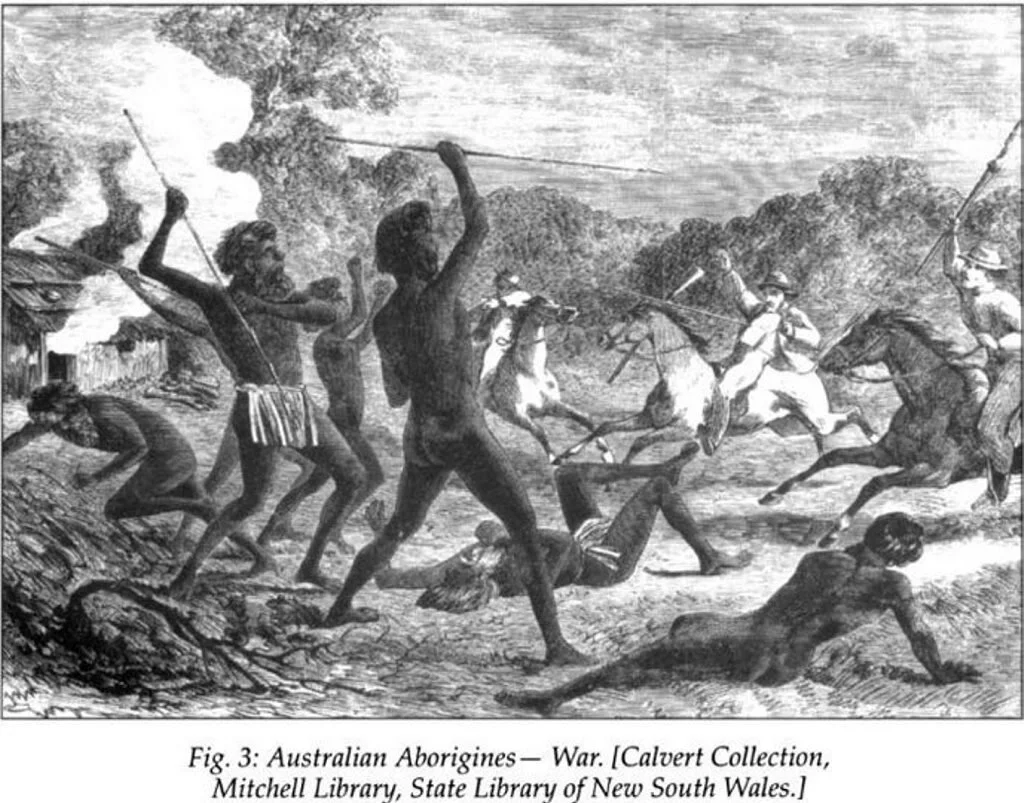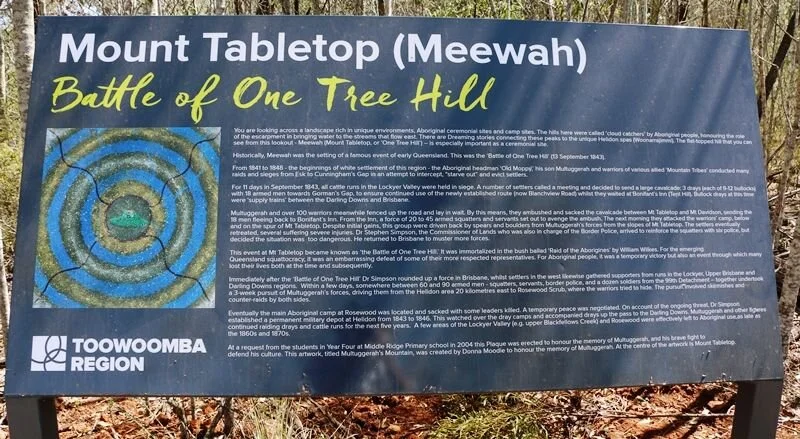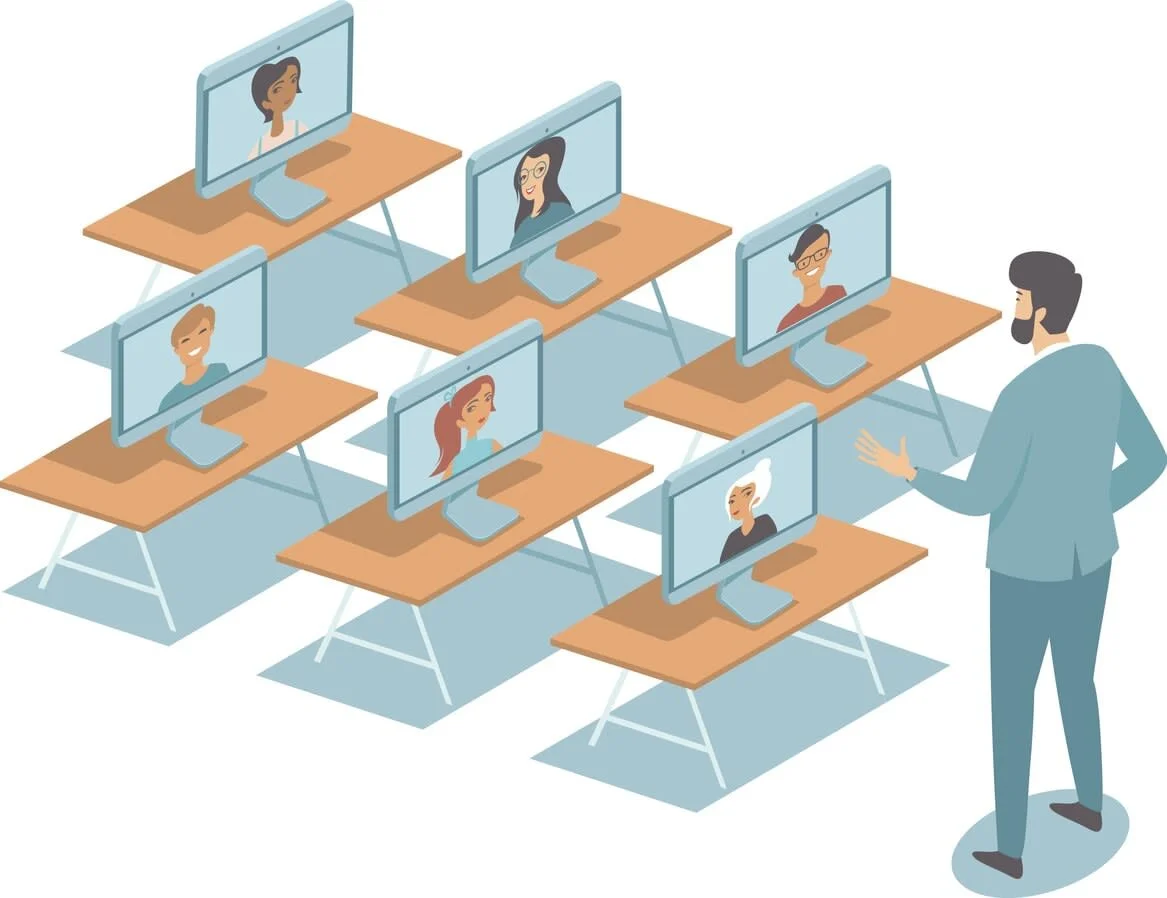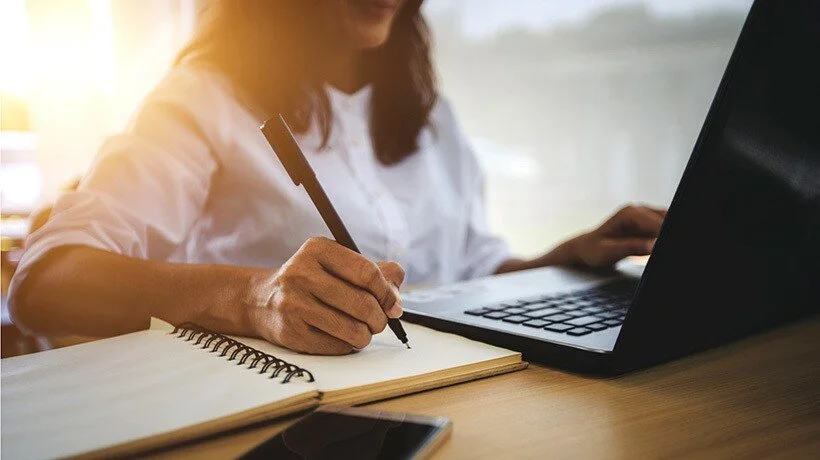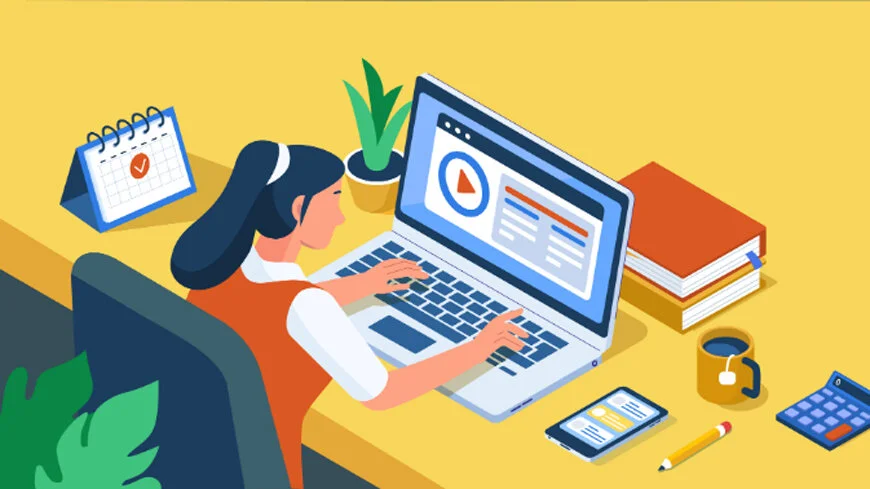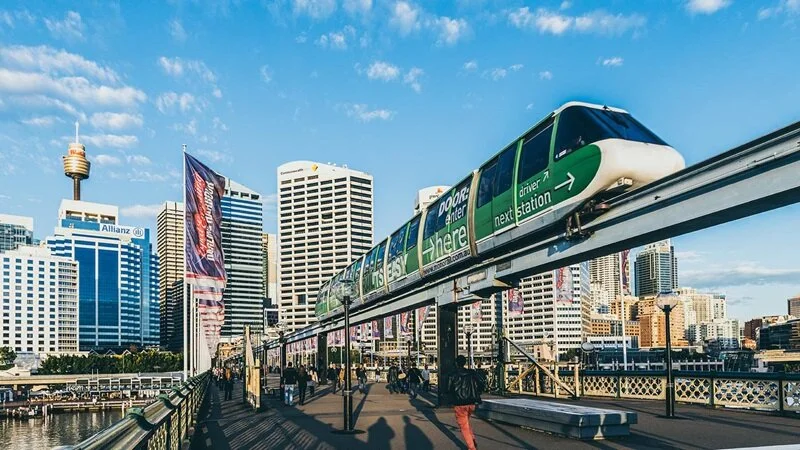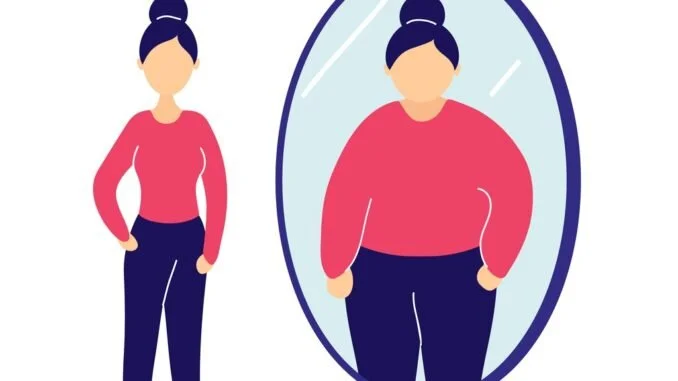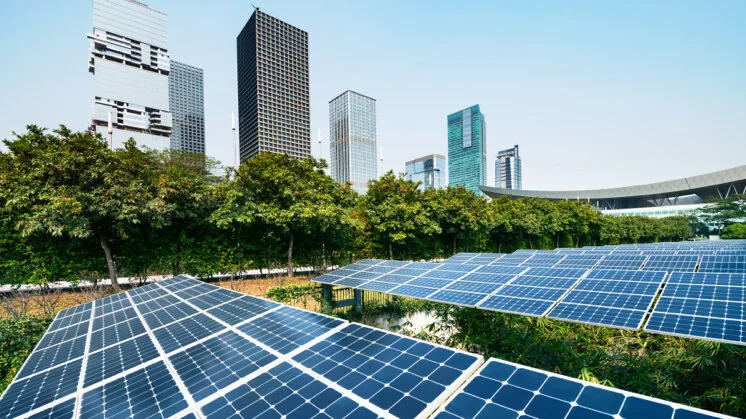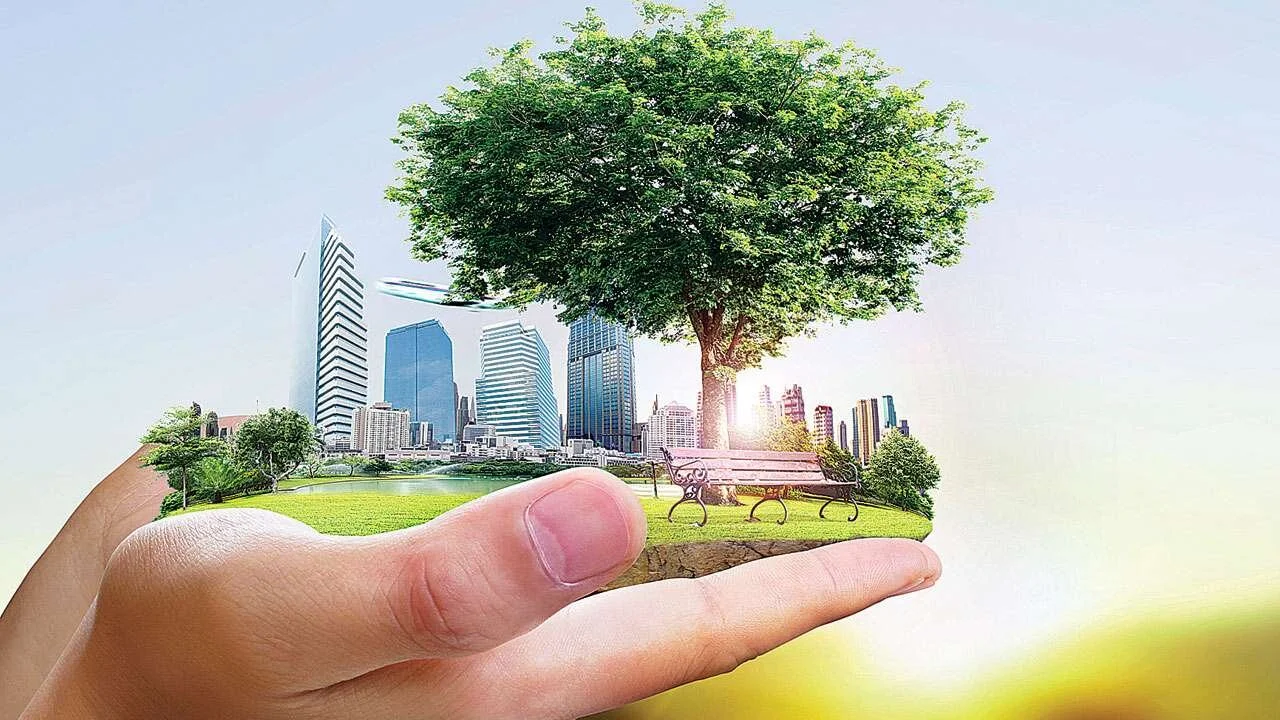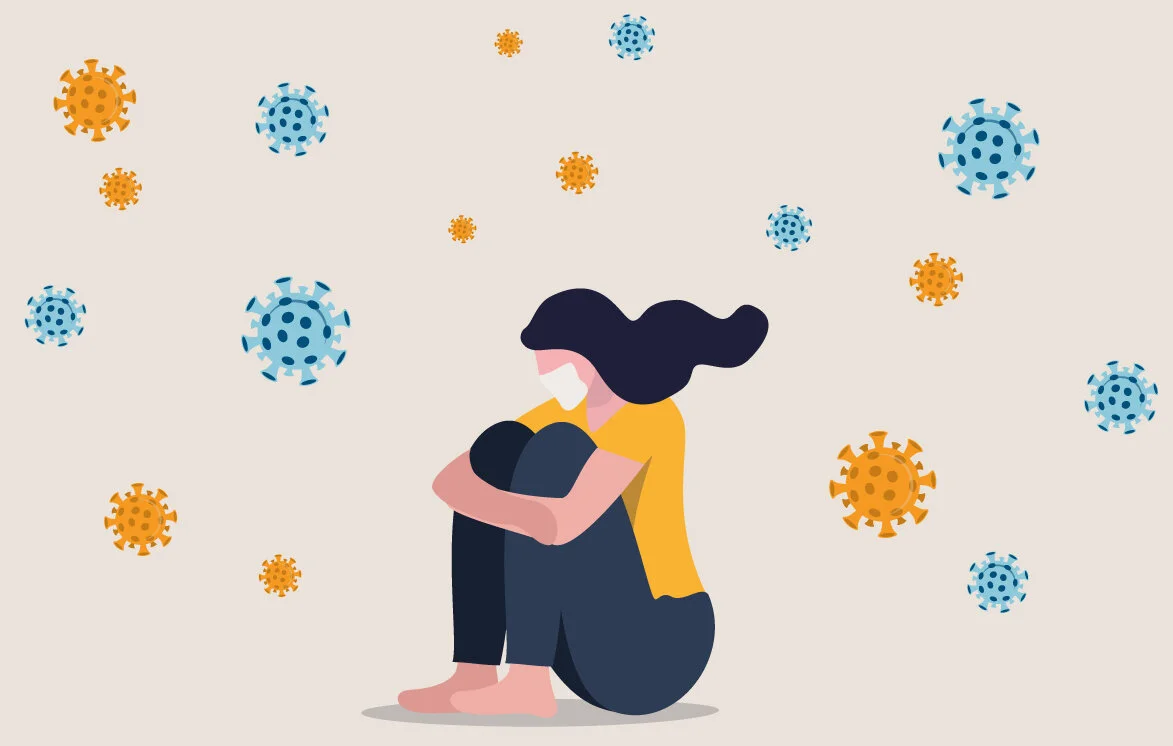I would like to share the story behind two powerful symbols in our community: the Red Bench and the Red Shoe Project. These initiatives are more than mere displays—they represent a commitment to action, a dedication to creating a world where every person can live safely, free from the threat of violence. These symbols serve as reminders of the lives affected by domestic violence, and they stand as calls to action for us all.
The Red Bench, now permanently installed in @ the Empire Theatre, is painted a bold red, reminding us daily of the devastating impact of domestic and gender-based violence. This bench honours those who have suffered in silence, celebrates the resilience of survivors, and mourns those who have been tragically lost. It serves not just as a place to sit, but as a symbol of our commitment to prevent further harm and to build a community where everyone feels safe and valued.
In September 2024, our community came together for the unveiling of the Red Bench, and it was a powerful moment of unity. We expressed a shared vision for change—a vision that says we stand united for the safety, dignity, and future of each person. This bench is not simply a marker; it is a constant reminder that the well-being of one is interconnected with the well-being of all.
On the same morning of the unveiling of the Red Bench, we launched the Red Shoe Project. This project amplifies this message of the Red Bench. The Red Shoe Project is an international movement that uses the image of red shoes to speak to the impact of domestic violence. Each pair of shoes represents a life touched by violence, each empty space between them a void left behind in families, friendships, and communities. When we launched the Red Shoe Project locally, we invited members of the community to donate red shoes, each pair a testament to a story, a memory, a life impacted.
On November 25th, also known as White Ribbon Day, these red shoes will be displayed in a solemn arrangement, each pair placed a body-length apart. This powerful display will serve as a stark visual reminder of the toll that domestic violence takes on our society. Each pair of shoes represents a woman or child whose life was tragically cut short, and each space in between symbolizes the emptiness felt by those left behind.
After this poignant display, the shoes will be auctioned off to raise funds for critical support services in our community. Proceeds will go to services that focus on recognizing, responding to, and referring cases of domestic violence, offering vital support to those affected. This is an opportunity for everyone to take part, to contribute to meaningful action, and to stand in solidarity against violence.
Reflecting on the lives lost to violence, we are reminded of the futures that were taken too soon, of the families forever changed. While these red shoes memorialize these losses, they also embody resilience and hope. They represent a commitment by our community to confront domestic violence head-on and to work toward a future where no one has to suffer in silence.
The Red Shoe Project’s message is unmistakable: “No More.” No more silence, no more turning away, no more pretending this issue isn’t real. Each of us has a role to play—to start conversations, advocate for change, and stand visibly in support of those impacted by domestic violence.
Together, the Red Bench and Red Shoe Project speak not only of past tragedies but also of hope and solidarity. They remind us that our community stands united, ready to make a difference, to create change, and to ensure a safer future for all. Let these symbols inspire us to continue this journey—to #ChangeTheEnding for those who need our support.
Thank you for being part of this collective stand against violence. Let’s continue to build a future where every person in our community can live free from fear, knowing that they are supported, valued, and protected.
